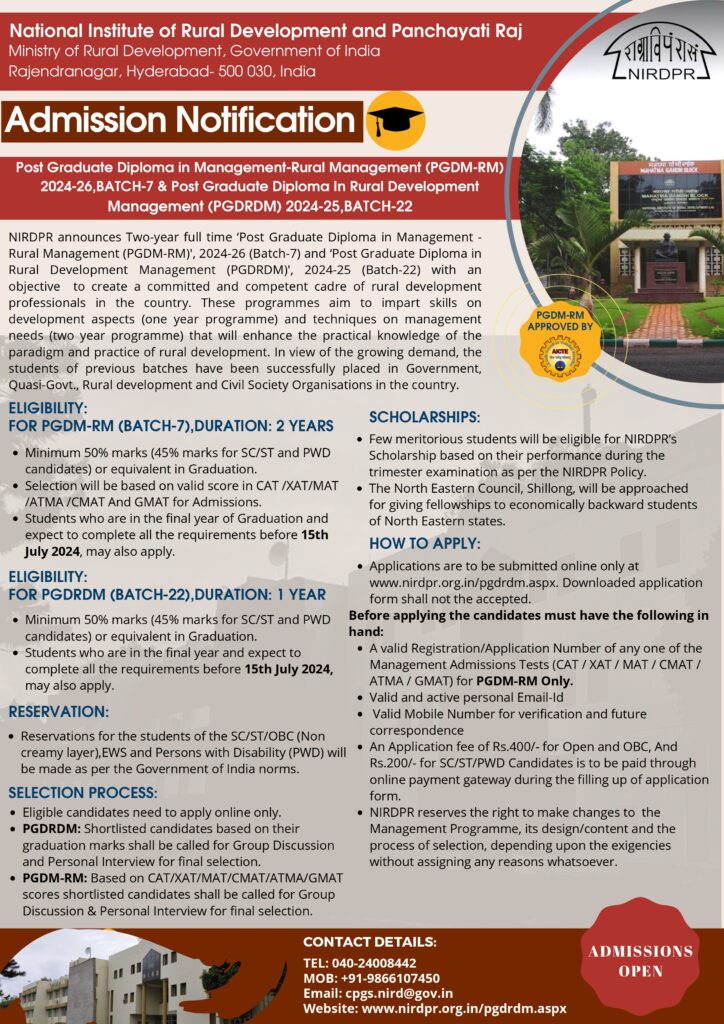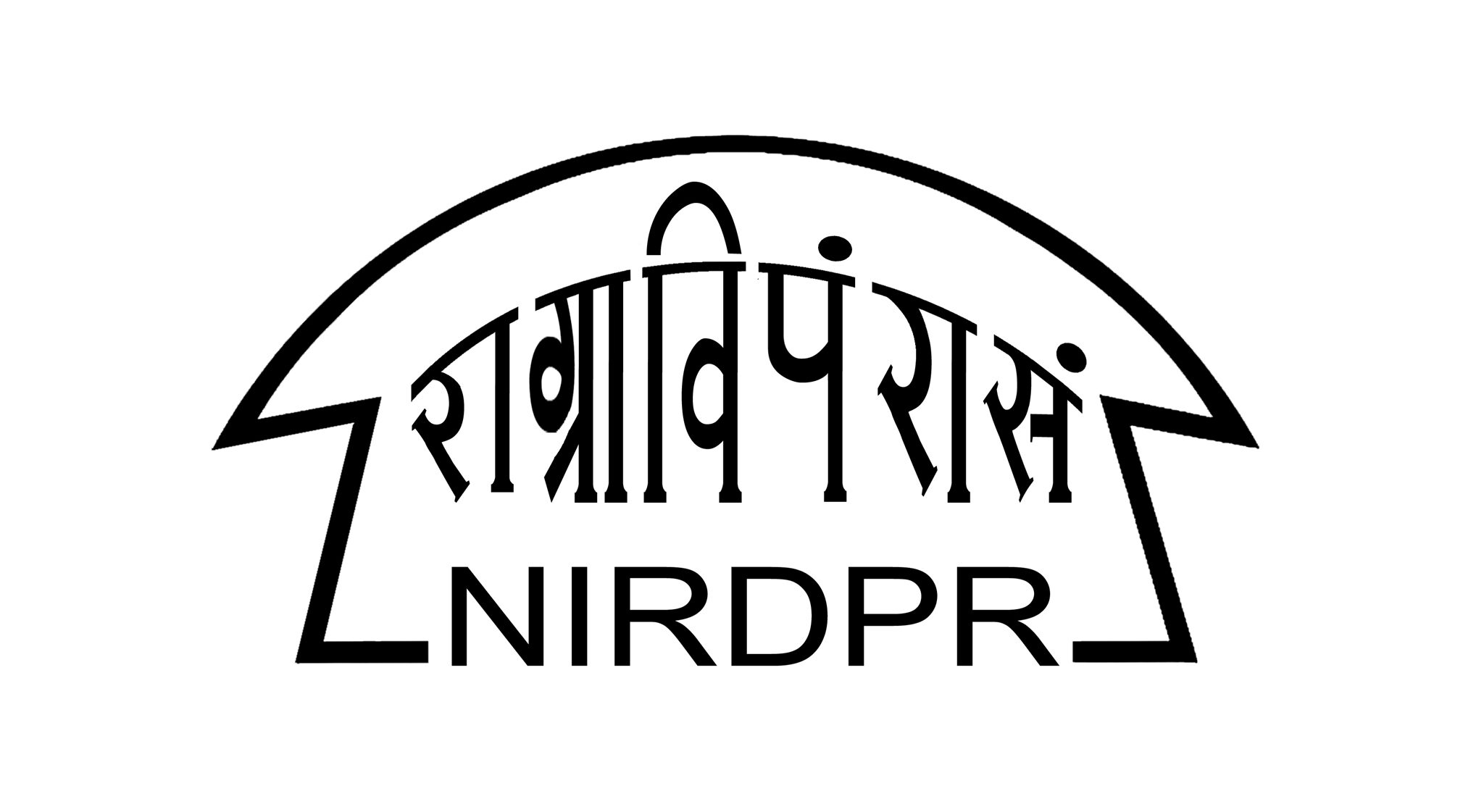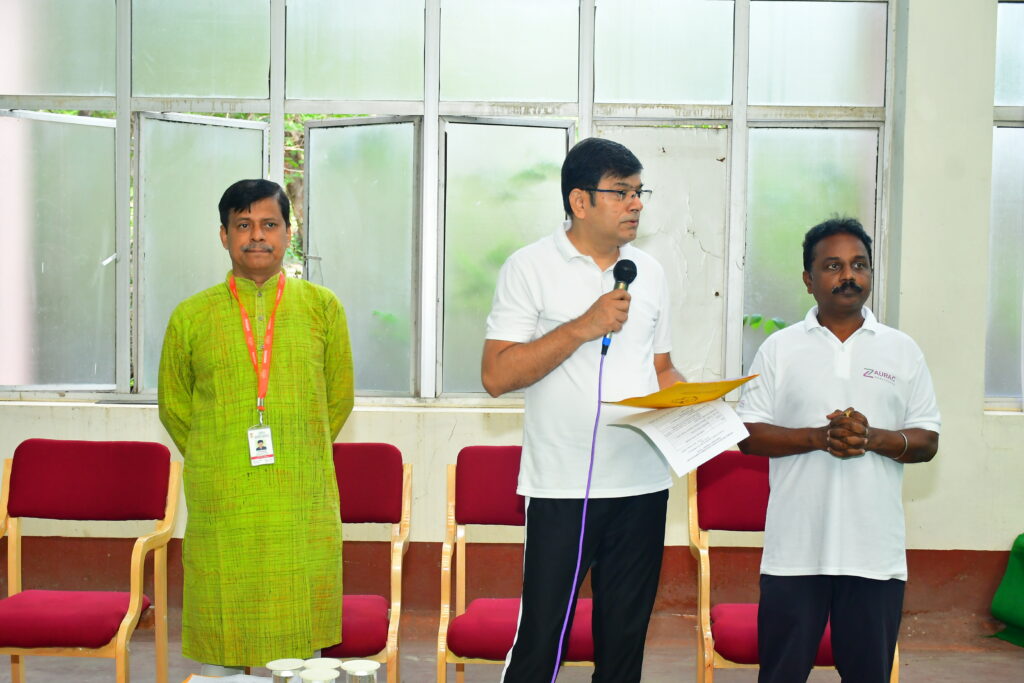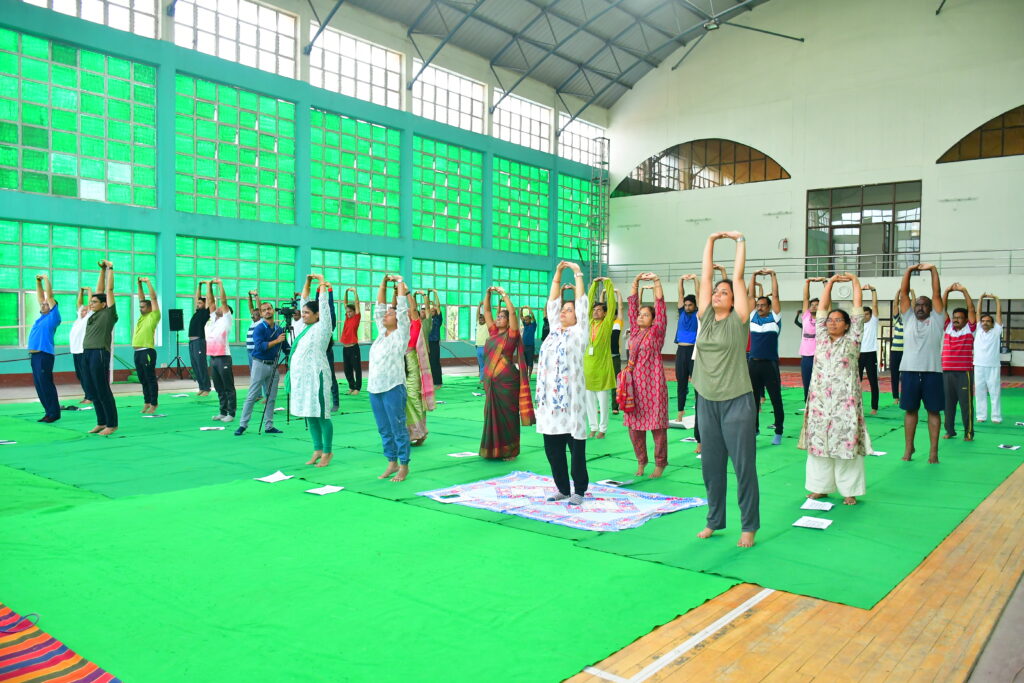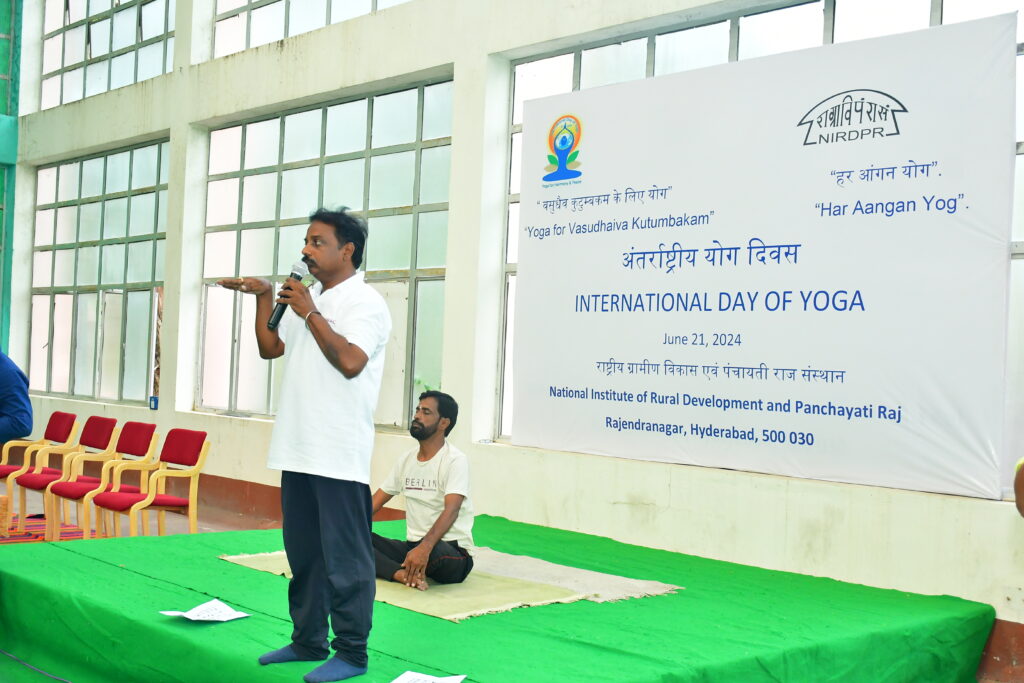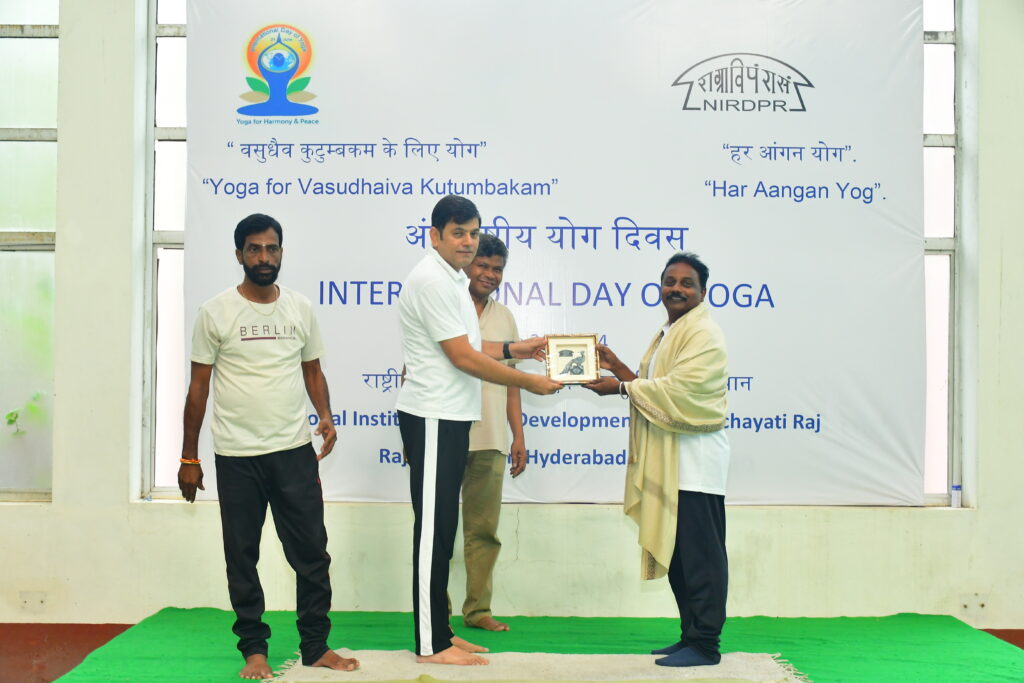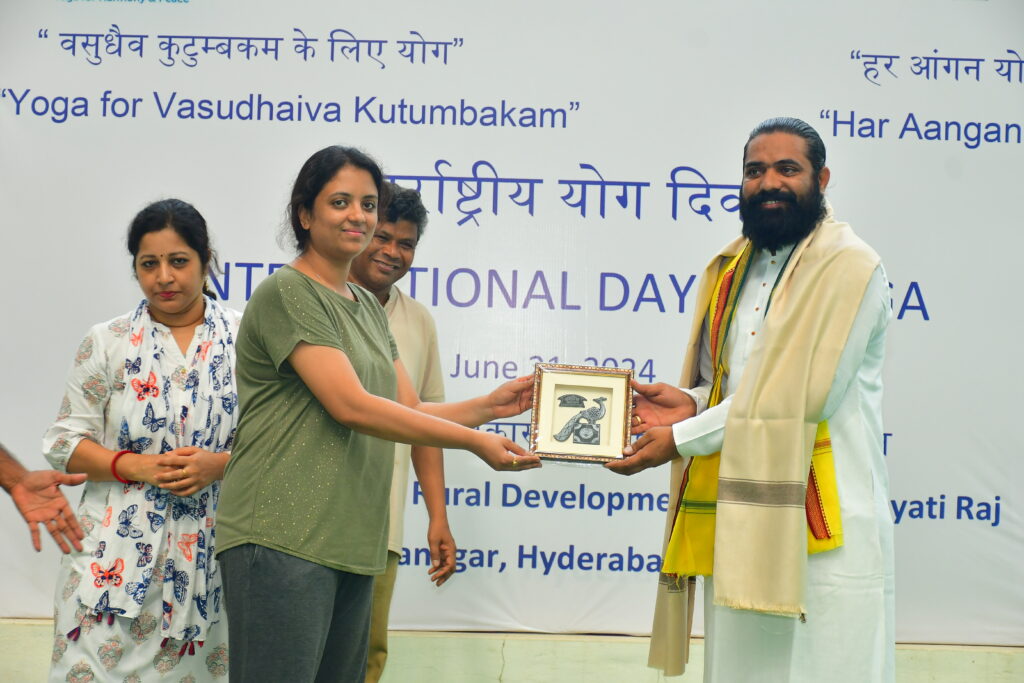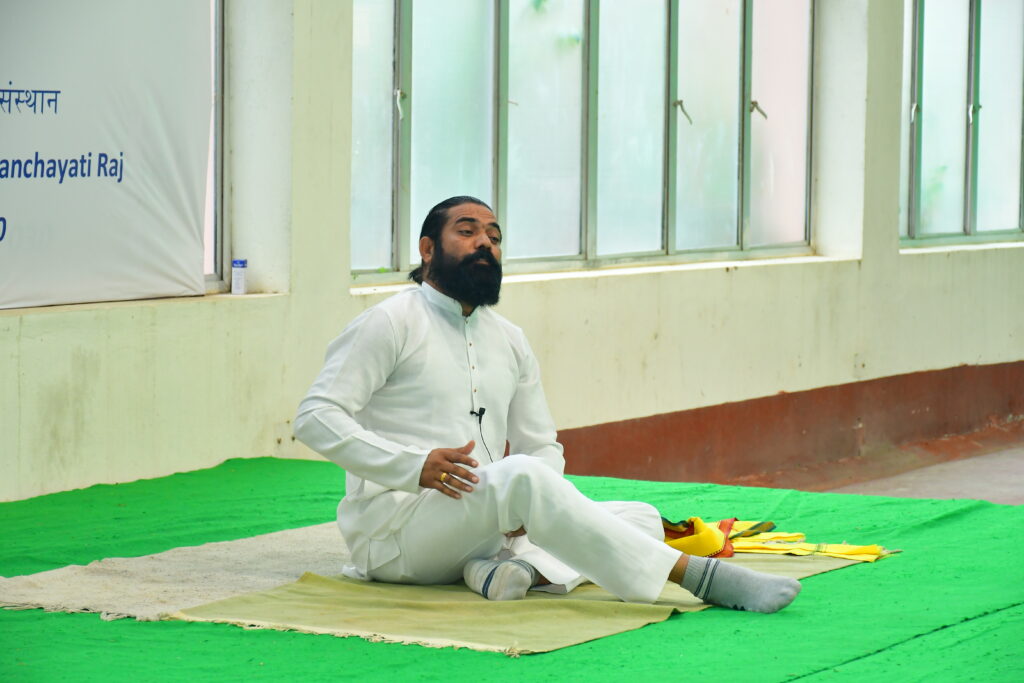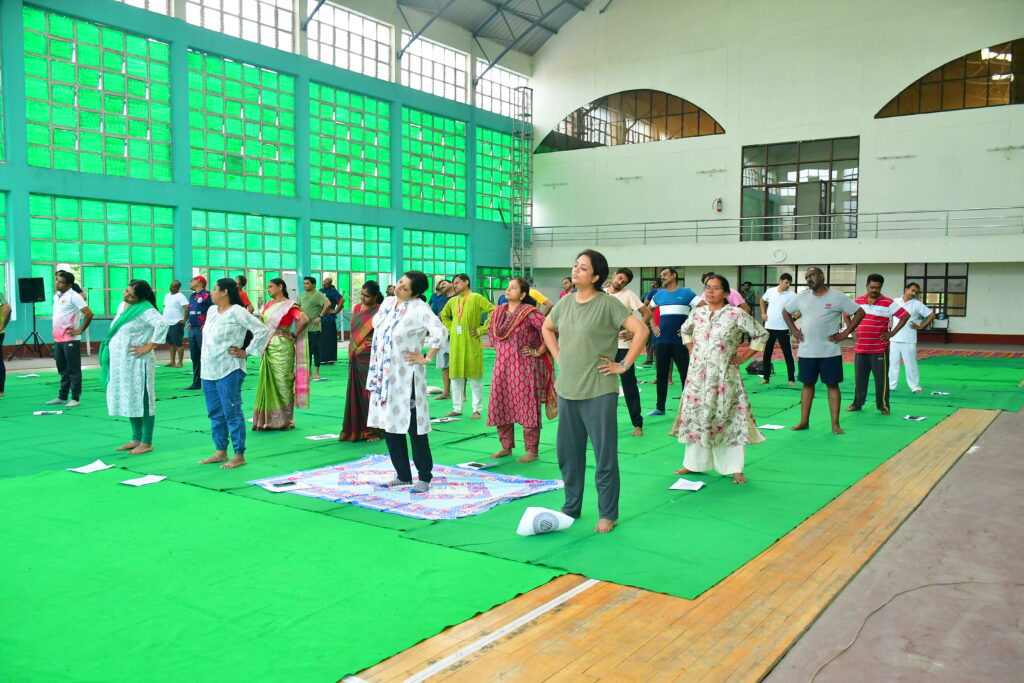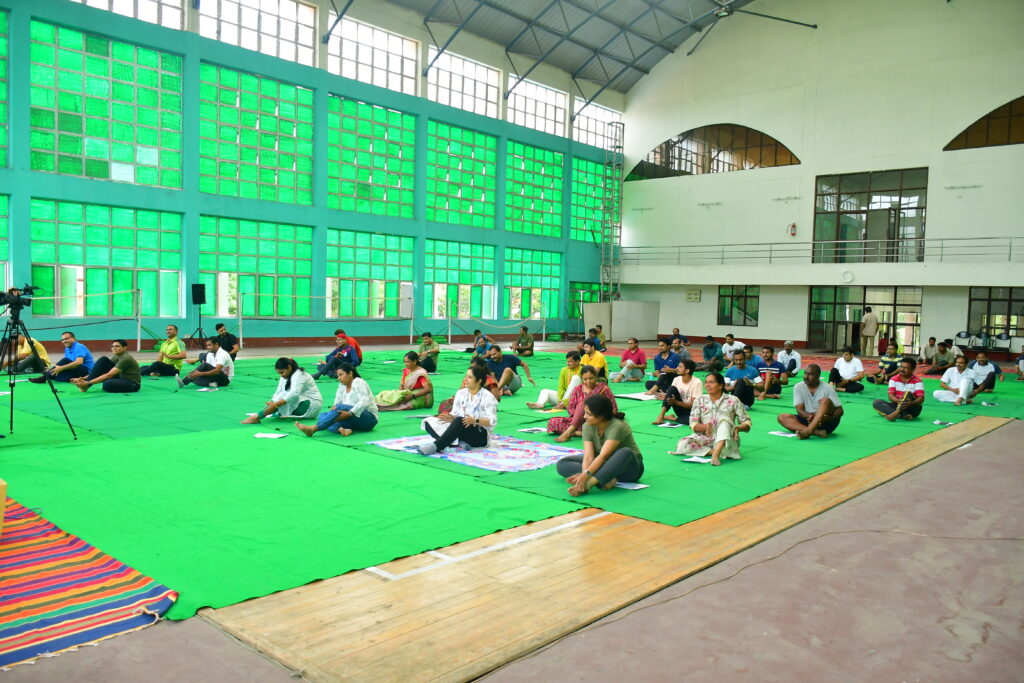
CONTENTS:
LEAD STORY: Disaster Risk Reduction and Preparedness Strategies: Insights from Tripura
International Training Programme of Elected Representatives of City Councils and Officials of LGA from the Republic of Maldives
Training Programme on Strategies for Up-scaling Production System Technologies under WDC-PMKSY 2.0
GENDER KALEIDOSCOPE: Interview with Dr Lekha S. Chakraborty
Training Programme on Alternative Livelihood through Online Media Portals
Training Programme on Next-Gen Research in Rural Development
TOLIC-2 Organises Hindi Workshop at CSIR-IICT, Hyderabad
ToT on Entrepreneurship and Sustainable Livelihood Models for Rural Communities
CASE STUDY: Examining Efficiency and Inter-Firm Linkages in the Ragi Value Chain of Bhurmuni, Uttarakhand
ToT on Establishment and Functioning of Gender Resource Centres under DAY-NRLM
6th Management Development Programme on Rural Development Leadership for Block Development Officers
Three-Day Training on Roadmap to Achieve SDGs through Mahatma Gandhi NREGS
Telugu Classes for Officials Begins at NIRDPR
NIRDPR Observes International Day of Yoga 2024
UBA ACTIVITIES:
HeART Programme: Orientation for MBBS Students in Community Service under UBA
Computer System and Solar Light Donated to Government Schools of Adopted Villages
SIRD/ETC CORNER
Skills Training Programme on Soap & Candle Making at ETC, Nongsder
LEAD STORY:
Disaster Risk Reduction and Preparedness Strategies: Insights from Tripura
Mr. Suman Deb
Capacity Building Officer, Tripura State Disaster Management Authority, Agartala
and
Dr. V. Suresh Babu
Associate Professor, NIRD&PR – North Eastern Regional Centre, Guwahati
vsureshbabu.nird@gov.in
State Hazard Profile
Tripura, one of the most vulnerable states in India, is prone to natural and human-induced disasters due to its geographic location and socio-economic, geological, and climatic conditions. Earthquakes, floods, cyclones, landslides, hailstorms, lightning, dry spells, and human-induced hazards such as epidemics, fire, and road accidents are major hazards of the state.
The multi-hazard-prone nature of the disaster profile of the state, along with the increasing frequency and intensity, particularly of hydro-meteorological disasters, includes floods, cyclones, and landslides. Floods, in particular, continue to ravage many parts of the state almost every year, and incidences of landslides, lightning strikes, fires, and other disasters are being increasingly reported.
Vulnerability to Natural Hazards:
Hazard Intensity of Districts of Tripura

According to the Hazard Intensity Ranking of districts, Sepahijala and Dhalai districts are the most vulnerable in the state. Sepahijala has a very high risk of earthquakes, floods and cyclones, whereas Dhalai has a very high risk of earthquakes, cyclones and landslides, besides high risk of floods. The district of West Tripura, which has a very high risk of earthquakes and cyclones, is particularly vulnerable to urban floods.
Vulnerability to Natural and other Hazards
Earthquakes:
According to the Seismic Zonation Map of India, Tripura falls within the highest earthquake risk zone, i.e. Zone VI. A number of moderate to high-magnitude earthquakes have occurred within the state boundary and a radius of 100 km over the last 150 years.
The entire state of Tripura falls in seismic zone V as per the Indian Standard Code (IS 1893 2002) with a zone factor of 0.36, which signifies the severity of earthquake hazards in the region. The current Indian Seismic Zonation map was prepared based on past Seismicity and Seismo-Tectonic information. However, this zonation map does not reflect the possible future seismic hazards and associated geotechnical hazards, liquefaction, and landslides in the region.
The Office of the Geological Survey of India conducted a seismic susceptibility study of Dharmanagar city in 2024. The study report highlighted the city’s high seismic susceptibility due to factors like proximity to seismic sources, underlying lithology, geomorphology, and geophysical and geotechnical parameters.
About 41.2 per cent of all houses in the state are kutcha houses (mud, unburnt brick and stone wall). These kutcha houses will likely experience severe damage during moderate-intensity earthquakes, including collapse. About 50.2 per cent of the houses are built with bamboo and have thatch/metal sheets for roofing; these structures perform well during earthquakes and do not pose as great a risk as poorly designed concrete and kutcha houses.
Vulnerability to Floods
The state is bestowed with a relatively high average annual rainfall of 212.2 cm with an average number of rainy days at 92. Normally, rain arrives in the state in late April and continues until October. However, the intensity of rainfall increases during the months of June to September. Higher rainfall during this period, causing floods in low-lying areas and land erosion throughout most of the state, has become a regular feature. With increased urbanisation and uncharacterised rainfall, the phenomena of urban floods are increasingly being reported across the state’s urban centres. In 2022, the capital city of Agartala experienced flooding. The normal rainfall for Agartala was predicted to be 195 mm for the month of June. However, the city received 180 mm of rain in 24 hours, triggering inundation and waterlogging. This was the second instance of high-intensity rainfall in a month, and the localised event quickly overwhelmed the city’s drainage system, causing water logging to persist for many days in the low-lying areas of the city.

Increased siltation, high-intensity rainfall over short durations, narrow river channels, urbanisation, and unauthorised constructions along drainage channels, along with transboundary issues at the point of discharge, are issues that have challenged flood management in Tripura.
Vulnerability to Cyclones/Wind Storms:
The state is vulnerable to cyclones, wind storms and strong winds, which occasionally reach the state after crossing Bangladesh. In such events, poorly built houses and those with sloping roofs such as thatch and tiles, A.C. sheets, and corrugated galvanised iron sheet roofs that are not fully anchored and integrated will likely suffer damage.
The state has a history of being impacted by cyclones originating in the Bay of Bengal and making landfall in Bangladesh or West Bengal. The state witnesses high-intensity winds and rainfall as the cyclonic systems make their way inland and gradually dissipate.
Prominent cyclones that have originated in the Bay of Bengal in recent years and made landfall in either Bangladesh or West Bengal and rainfall with high-speed winds in Tripura include Cyclone ‘Sidr’ in 2007, Cyclone ‘Mahasen’ in 2013, Cyclone ‘Fani’ in 2019, Cyclone ‘Amphan’ in 2020, Cyclone Jawad in 2021, Cyclone ‘Sitrang’ in 2022, Cyclone ‘Midhili’ in 2023 and Cyclone ‘Remal’ in 2024. These cyclones brought heavy rains along with strong winds and caused widespread destruction to agriculture and horticulture crops, damage to houses and infrastructure, uprooting of trees and electrical poles, causing road blockages and injury to many.
Vulnerability to Landslides
Many parts of Tripura, particularly the hilly regions, are vulnerable to landslides. A landslide is a natural hydro-geological hazard in which earth material is dislodged under gravity triggered by intense rainfall, earthquakes, changes in groundwater, and anthropogenic activities.
Tripura experiences landslides almost yearly during monsoon season, causing casualties and economic losses. As per the landslide susceptibility maps developed for the state, most areas come under very low to moderate landslide susceptibility zones. Around 73.2 per cent area of the state is found to be under low landslide-susceptible zones during the pre-monsoon season, around 62 per cent of the area is prone to landslides with moderate susceptibility during the monsoon season, and 68.5 per cent of the area comes under landslides with low susceptibility zones during the post-monsoon season.
Vulnerability to Forest Fire/Fire
Forest fire is a frequent and constant natural disaster in the forest ecosystems of Tripura. The slash and burn shifting cultivation, locally known as jhum, is the predominant form of agriculture in the hill tracts and is found to be the primary cause of forest fires in the region.
The government of Tripura has prepared the State Action Plan on Forest Fires. The forest fire vulnerability map shows that about 52 per cent of the area in Tripura is highly prone to fire hazards. Most of the fire incidents in Tripura are anthropogenic in nature. To meet the challenges of forest fire mitigation activities in Tripura, it is recommended that during fire season, a strong communication network between the forest departments and the community and the respective departments engaged in providing alerts be built. It is vital that the forest department and the local community are aware of the fire risk zones where forest fires can spread rapidly by taking up awareness programs.
Besides forest fires, fires in houses, markets, and other establishments are common in the state. At the same time, many of these are due to anthropogenic reasons such as lack of awareness, illegal power hooking, vandalism, etc. These fires have the potential to cause immense loss of life and property.
Thunderstorm / Lightening/ Thunder
Thunderstorms, thunder & lightning, squalls, dust storms, hailstorms and strong winds have emerged as major weather hazards in recent years, affecting different parts of Tripura.
Experts believe that due to rising global temperature and climate change (IPCC Special Report, 2018 – Global Warming of 1.5 °C), the severity and frequency of thunderstorms/dust storms will rise in the years ahead. India, including Tripura, may also experience an increase in the severity and frequency of these incidents in future.
Heavy Rains
Heavy rains have been reported across the state over the years, particularly during 2017-19 in the recent past. They impact the lives and livelihoods of people and disrupt their normal lives in the affected areas. As a result, the affected families need to take shelter during heavy rains.
Climate Change Vulnerability
Climate change is a relatively new factor that will act as an additional stress on the existing vulnerabilities of people and the environment in Tripura.
The vulnerability of Tripura to climate change is intimately related to its location and indigenous population. Its location on the international border of Bangladesh, which is recognised as a climate-sensitive region of the world, is expected to experience a significant increase in the frequency and intensity of cyclones, heat waves, droughts, stronger winds, and more rainfall, storms, sea-level rise, and increased flooding with climate change. Since its population mainly depends on agriculture, horticulture, forests, and other natural resources for their livelihood, the state and its people will be directly impacted by these hydro-meteorological hazards in a changing climate. The impact of climate change has already been manifested through land degradation, deforestation, proliferation of invasive species, loss of biodiversity, landslides, invasive species, low productive agriculture, migration, etc.
Under the future climate change scenarios, the impacts of climate change are projected to exacerbate, thereby increasing the vulnerability of biophysical and socio-economic systems, including water availability, agriculture, environment, and ecosystems.
Preparedness of the State Government for Disaster Management:
To address the different disasters and disaster-induced climate change, the state government has taken various preparedness and mitigation measures:
Preparedness Measures:
- A Disaster Management Plan for the state, districts, sub-divisions, and departmental level has been prepared and updated regularly. The initiative has been taken to prepare village & panchayat-level disaster management plans.
- Forty-seven categories of equipment for handling disasters have been procured. This list includes critical equipment like drones, life detectors, night vision, etc.
- HAM radio has been considered as one of the alternate communication systems in disaster management. The State government has commissioned nine HAM radio stations in all eight districts and state and three repeater stations. Besides the district-level setup, additional base stations have been commissioned in South Tripura with nine stations – West Tripura with three stations, Dhalai with two stations, and Unakoti with four stations. Now, the state has 27 base stations and three repeater stations.
- Twenty-four satellite phones have been procured.
- Eight hundred community volunteers have been trained under the Government of India project ‘Up-scaling of Aapda Mitra’.
- More than 1500 Civil Defence volunteers have been trained.
- Seven Automated Weather Stations (AWS) and eight Automated Rain Gauges (ARGs) have been installed in different locations in the state to collect rainfall data and weather information for analysis and issuance of early warnings.
- National Disaster Management Authority (NDMA) has conceived a National Project ‘Common Alerting Protocol (CAP) based integrated alert system (SACHET). The State Government effectively uses it to disseminate early warnings through the SMS system.
- Emergency Response Support System (ERSS)-112 has been installed at the State Emergency Operation Centre (SEOC).
- Four Coys of the State Disaster Response Force (SDRF) have been constituted from Tripura State Rifles (TSR).
- Embankment studies of Howrah, Katakhal & Manu Rivers have been conducted by the North East Space Application Centre (NESAC) Shillong.
- Micro-zonation studies of Dharmanagar City have been completed, and GSI is conducting micro-zonation studies of Udaipur City. A proposal has been sent to GSI to implement micro-zonation studies for Agartala City.
- It is a standing instruction to every school to conduct an earthquake evacuation drill in every school on every 3rd Saturday.

Mitigation Measures:
- Four buildings (Ranir Bazar PHC, Mandwai HS School, Melaghar Girls H.S. School & PWD Division-I Office Building) and one Technological Demonstration Unit (TDU) have been retrofitted.
- Heritage buildings, including Ujjayanta Palace, Neer Mahal, and MBB College, have been retrofitted, and Pushpa Banta Palace is being retrofitted.
- Six Critical bridges have been retrofitted to resist multi-hazards.
- Rapid Visual Screening (RVS) and Non-Structural Mitigations (NSM) have been implemented in 600 schools.
International Training Programme of Elected Representatives of City Councils and Officials of LGA from the Republic of Maldives
The Centre for Panchayati Raj, Decentralised Planning and Social Service Delivery (CPRDP&SSD), NIRDPR organised an international training programme on Leadership Development of Elected Representatives of City Councils and officials of LGA from the Republic of Maldives from 09th to 22nd June 2024 on its Hyderabad campus. The participants of the capacity building and training programme represented a diverse array of stakeholders from the Maldives, comprising Presidents, Vice Presidents of the Women Development Committee, City Council Members, Deputy Mayor hailing from the Addu City Council, Male City Council, Thinadhoo City Council, Fuvahmulah City Council, Kulhudhuffuhi City Council and Legal Officer from Local Government Authority. A total of 30 participants (25 women and five men) from various City Councils in the Republic of Maldives and the Ministry of External Affairs, Male, attended the training programme.
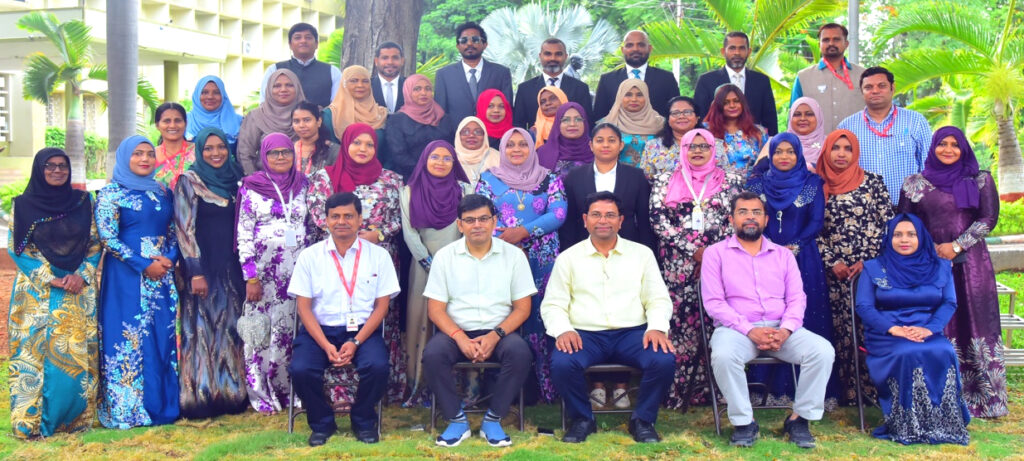
After the self-introductory session, the inaugural address was delivered by Dr Anjan Kumar Bhanja, Course Director & Associate Professor & Head of CPRDP&SSD, NIRDPR. Extending a warm welcome to the officers, he shared his views on the two-week programme structure and gave a brief overview of how NIRDPR has been working to reduce poverty through several government schemes. Through a blend of theoretical frameworks, practical training modules, and knowledge-sharing sessions, the programme endeavoured to equip participants with the requisite skills, knowledge, and tools to navigate the complexities of local governance, foster community engagement, enhance service delivery mechanisms, and chart a course towards inclusive and sustainable development.
The keynote address was delivered by Shri Manoj Kumar, Registrar & Director (Admin), NIRDPR, gave brief insights into the programme. Dr Pranab Kumar Ghosh, AR(T), gave a brief note of various developmental activities at NIRDPR and Rural Technology Park.
The session began with a vibrant meet and greet, followed by an address from the Chief Executive Officer of Local Government Authority, her Excellency Dr Mariyam Zulfa, who provided participants with the opportunity to connect with one another and establish networks within the diverse cohort. Amidst an atmosphere of camaraderie and anticipation, participants exchanged introductions, fostering a sense of community and collaboration from the outset.
This training programme covered various aspects related to the theme, viz. (i) Expansion of the vision of the representatives of City Councils Members about the roles that they can play more significantly in developing the status of people in the councils, (ii) Promoting Leadership among members of councils, (iii) Need for Localisation of Sustainable Development Goals and scope for attainment of the SDGs through Local Councils and City Councils with special reference to the good practices in India,(iv) Audit of Urban Local Bodies (v) Scope of improving the status of service delivery, redressal of public grievances, Social Protection and social cohesion in favour of City councils of Maldives, (vi) Scope for political, economic empowerment with reference to a few good practices, (vii) Urban Management, Urban Planning, Effective Use of Urban Resources, Optimisation of Service Delivery (viii) Visit to District Collectorate to observe various urban Development activities at Warangal and Hanumakonda districts to experience the political and economic empowerment, (ix)Visit to best practices in solid waste management in Warangal, (x) Scope for emulating innovative and appropriate rural technology in Maldives based on a few good practices including the RTP (Rural Technology Park), (xiv) Scope for improvement in fisheries sector in Maldives based on the good practices in India, (xv) and visit to Indian National Centre for Ocean Information Sciences (INCOIS),
CPRDP & SSD and NIRDPR’s in-house faculty members and select guest faculty as subject matter specialists cum practitioners with rich experience and expertise in the areas of rural development (RD), self-help groups (SHGs), livelihood promotion, panchayati raj, NRLM, rural entrepreneurship, wind and solar technology, urban planning, development, management, audit, etc., participated in the programme and contributed to the success of the programme.
A range of training methodologies were used during the training programme, duly keeping in view its broad and specific objectives, duration and expectations of the participants. It included lectures and interactive sessions with the help of PPTs, video clips, short films and discussions, recap sessions by the participants before the commencement of regular sessions every day, field visits to RTP, District Panchayat, SHGs, Warangal district and exposure visit to NFDB, and INCOIS.
Field visits were organised to the following places to impart practical knowledge and reinforce the learning made in the classroom.
Rural Technology Park (RTP): Dr C. Kathiresan, Associate Prof. & Head, CIAT, NIRDPR & Mr Mohd. Khan, Senior Consultant, CIAT, NIRDPR, with the help of PPTs, video clips, and unit visits, explained the activities of RTP, emphasising the importance of frugal innovations in the rural economy. The participants were introduced to a variety of models of rural technologies showcased with respect to rural housing, renewable energy and natural resource management and skill development & promotion of entrepreneurship, and they appreciated RTP’s guiding principles, which included the use of local resources, cost-effectiveness, eco-friendly and blending tradition with modern technologies.
Urban Planning and Urban Management at the Municipality of Warangal District: The visitors’ interactions focussed on understanding the different activities done under the Municipalities with respect to sanitation, health and nutrition, vaccination, education to children, and employment provided under different schemes of the Central and state governments. They were also excited to know about the convergence of various line departments under one roof, where any grievance would be solved within 15 days.
The participants interacted with all the officials of the line departments presented in the District office. They were requested to explain the various activities undertaken by the district, Warangal and how the support is provided to the blocks when they are in need, deliverables given to the people of the various wards, the mechanism rendered to support various departments like sanitation, irrigation, health, water management, solid & liquid waste management, education, emergencies, etc. The visitors were given an overview of the district activities before their visit to the municipal activities sites for better understanding. The authorities shared some success stories to explain how women are being assisted by forming SHGs to get gainfully employed to support their families, and improve their social status and livelihood in the process. The participants visited dumping yard, parks maintained by municipalities, crematoriums, Mahakali bund in terms of urban development, etc.
The programme was a success, as per the feedback received. All the participants felt that the programme was organised systematically. Further, they felt that the serene training ambience, clean and hygienic surroundings and the infrastructure facilities (classrooms, guest rooms, food, hospitality and others) led to the training programme’s success.
Dr Anjan Kumar Bhanja, Course Director & Associate Professor & Head, CPRDP&SSD, NIRDPR, coordinated the programme with the assistance of Ms A. Sirisha, Project Training Manager and Mr M. Arun Raj, Training Manager.
Training Programme on Strategies for Up-scaling Production System Technologies under WDC-PMKSY 2.0
In the dynamic landscape of agricultural development, the challenge of water scarcity in agriculture looms large, casting a spotlight on the need for transformative solutions. The intricate interplay of evolving climate patterns and growing agricultural demands underscores the urgency for strategic interventions. Against this backdrop, the Pradhan Mantri Krishi Sinchayee Yojana (PMKSY) 2.0’s Water Development Component (WDC) stands as a critical framework for addressing water-related challenges in India. In the contemporary agricultural scenario, water scarcity has become a defining factor, amplifying the importance of innovative technologies. The present circumstances accentuate the necessity for efficient production system technologies to optimise water usage and bolster agricultural resilience. Embracing these technologies within the broader domain of WDC- PMKSY 2.0 becomes a response to current challenges and a visionary approach to shaping a sustainable agricultural future. As stakeholders navigate the complexities of water scarcity, integrating advanced technologies becomes imperative for fostering efficiency, productivity, and resilience in agriculture. This introduction sets the stage for exploring the symbiotic relationship between water development initiatives and cutting-edge technologies within the context of PMKSY 2.0. In the face of diminishing water resources, efficient production system technologies are central to achieving sustainable growth. The present scenario necessitates a strategic approach to up-scaling these technologies within the framework of WDC-PMKSY 2.0.
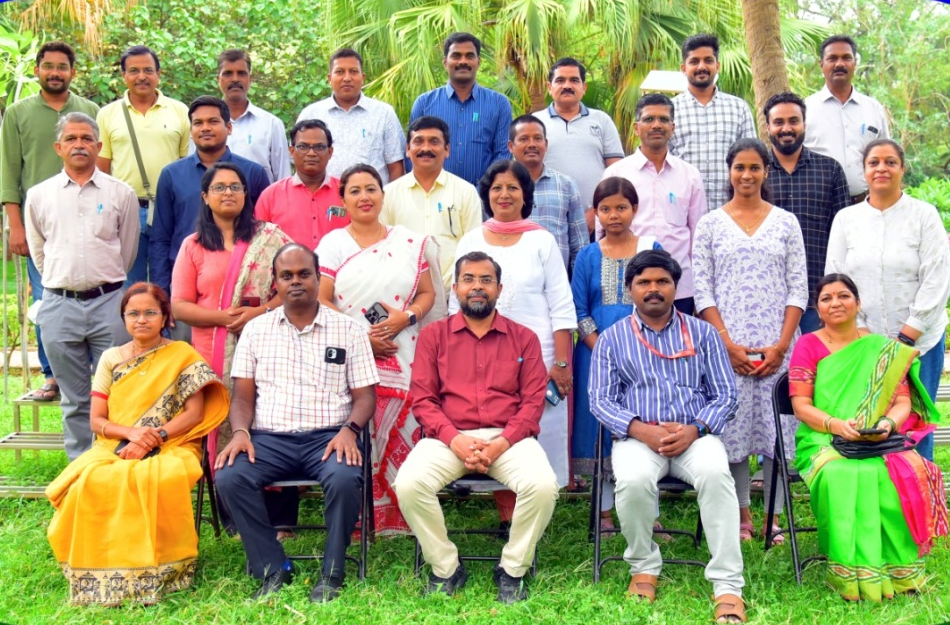
Against this backdrop, a three-day training program on ‘Strategies for Up-scaling Production System Technologies under WDC-PMKSY 2.0’ was organised by the Centre for Natural Resource Management, Climate Change, and Disaster Mitigation, NIRDPR, from 11th to 14th June 2024. It was attended by 21 participants from various states, including officials of water resources, NGOs, and other line departments, such as Panchayati Raj, Rural Development, and Soil Conservation departments across India.
The programme focused on training participants in effective water management techniques, such as watershed development, water harvesting, and conservation measures. The objectives were to (i) optimise water resources and ensure their efficient utilisation in agricultural activities, (ii) orient the trainees on community-based approaches of groundwater recharge and tools for augmenting the conservation practices of water resources through supply and demand side management, and (iii) disseminate information about production system technologies to officials of line departments by conducting demonstrations, and field visits to showcase successful case studies and encourage adoption of these technologies.
The programme began with a welcome address by Dr Ravindra S Gavali, Professor & Head, CNRM, CC & DM, NIRDPR, Hyderabad. In his address, Dr Gavali highlighted the importance of adopting innovative technologies in watersheds to enhance agricultural production and emphasised the need for capacity building.
In the first technical session of the program, Dr. Ravindra S. Gavali, Professor & Head of CNRM, CC & DM, presented the conceptual framework, guidelines, and salient features of WDC-PMKSY 2.0. Additionally, he provided a brief overview of its current status.
The following technical session was led by Dr Ravi Kumar, Scientist at ICAR – IIMR, Hyderabad, focusing on ‘Crop Diversification with High-Value Crops in Watersheds.’ During the session, he elaborated on the concepts of crop diversification, different types of diversification, and the nature and significance of these practices. Dr. Ravi emphasised the crucial role of crop diversification in rainfed areas, highlighting its importance in enhancing water management and agricultural sustainability within watersheds.
Dr. N. Nalini Kumari, Professor at PVNRTVU, Hyderabad, addressed a session on fodder production systems for livestock and strategies for revitalising fodder production technologies. She emphasised the crucial role of quality fodder in ensuring optimal livestock health and productivity, highlighting its importance specifically under watershed management. Dr Nalini discussed innovative approaches, including improved fodder varieties, conservation techniques, and efficient utilisation methods.
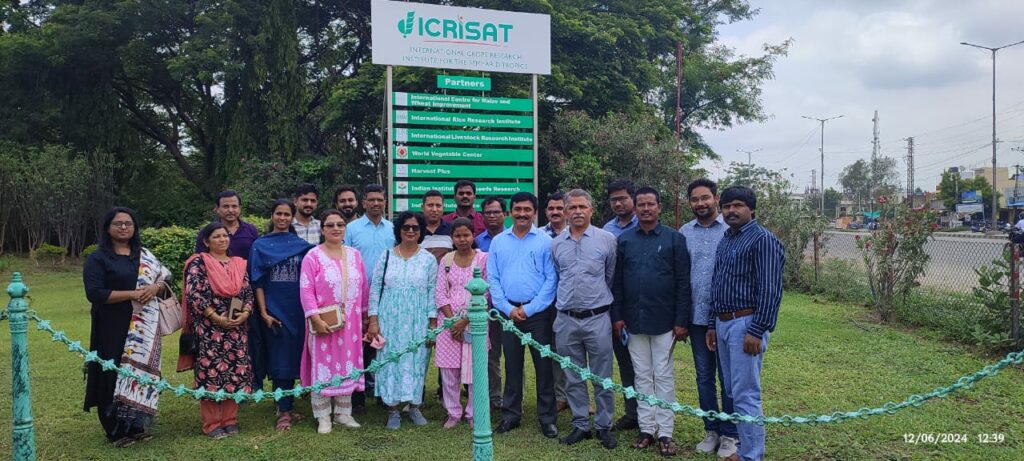
A field visit was arranged to ICRISAT (International Crops Research Institute for the Semi-Arid Tropics ) to gain insights into weather observations, production system practices, and watershed development studies. During the visit, Dr Arun Balamattifrom ICRISAT explained the various initiatives undertaken by the organisation in the field of watershed management. He highlighted the importance of managing water resources effectively in semi-arid regions to ensure sustainable agricultural practices. Dr. Arun elaborated on the different approaches and techniques employed by ICRISAT, such as contour bunding, check dams, and afforestation, to conserve water and prevent soil erosion.
Further, the participants visited ICAR – IIMR (Indian Institute of Millets Research), where Dr Ravi Kumar, Manager at NutriHub, provided detailed insights into their innovative methods for the value-addition of millets. Dr. Kumar demonstrated various techniques aimed at enhancing the nutritional value and market appeal of millet products. The visit included exploring NutriHub’s production units, where participants observed the processing and packaging stages firsthand.

The next session on ‘Crop Water Budgeting and Security Plans in Watersheds’ was addressed by Dr Ravindra Gavali, Professor & Head, CNRM, CC & DM, NIRDPR, Hyderabad. He emphasised the importance of water security plans in maintaining a reliable water supply for agriculture within a watershed. Dr Gavali also highlighted the need for strategies to address drought conditions and ensure preparedness. He also stressed some effective strategies involving creating water storage reserves, managing groundwater resources effectively, and exploring alternative water sources.
The session on ‘Seed Production System to Develop Village Seed Banks under Watersheds’ was delivered by Dr Pallavi, Scientist, SRTC, PJTSAU, Rajendranagar. She spoke about the seed production system aimed at developing village seed banks under watersheds. She discussed the importance of promoting local seed production to ensure the availability of quality seeds for farmers. Dr. Pallavi emphasised the need for community involvement and capacity building to establish and sustain village seed banks.
Participants further collaborated in group work to prepare a perspective presentation on watershed management. They brainstormed and strategised ideas on social mobilisation and capacity building at the community level, conservation of water resources, and strategies for upscaling production systems under the watershed development component of PMKSY 2.0. Discussions also encompassed financial planning, technology integration, and community engagement. Each group presented their perspective plan, showcasing innovative solutions for sustainable watershed development.
Dr AMV Subba Rao, Principal Scientist, CRIDA, Hyderabad, led the next technical session. He delivered a lecture on improving agricultural production through weather-based agro advisory services. He emphasised the role of accurate and timely weather information in optimising farming practices. Dr Rao highlighted the benefits of utilising agro-advisory services to make informed decisions regarding crop planning, irrigation, and pest management.
The following session was addressed by Dr Pragathi Kumari, Senior Scientist (Agronomy), PJTSAU, Hyderabad. She delivered a lecture on the integrated farming system under watersheds aimed at enhancing income. She highlighted the benefits of adopting a holistic approach that combines multiple farming practices, such as crop cultivation, livestock rearing, and aquaculture. Dr Pragati emphasised the synergistic effects of integrating different components to maximise productivity, income generation, and resource utilisation.
Dr. N. Nalini Kumari, Professor at PVNRTVU, Hyderabad, addressed a session on fodder production systems for livestock and strategies for revitalising fodder production technologies. She emphasised the crucial role of quality fodder in ensuring optimal livestock health and productivity, highlighting its importance specifically under watershed management. Dr Nalini discussed innovative approaches, including improved fodder varieties, conservation techniques, and efficient utilisation methods.
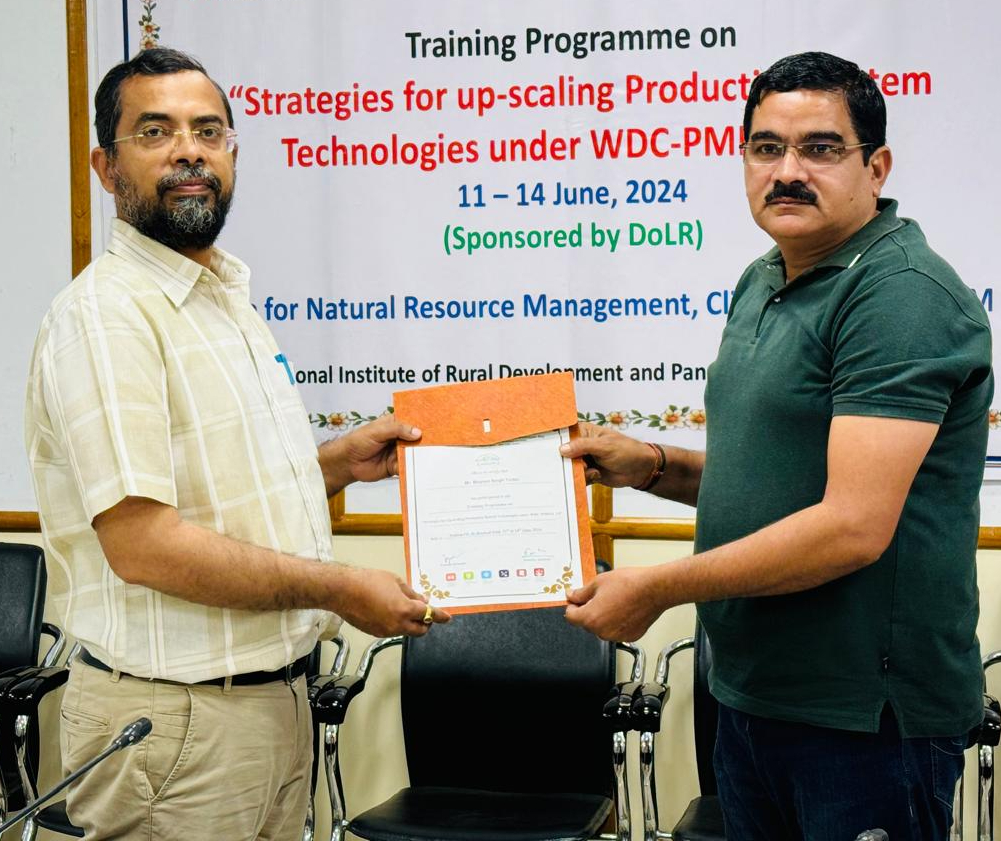
Dr Ravindra S. Gavali, Professor & Head, CNRMCC&DM and Dr Raj Kumar Pammi, Assistant Professor, CNRMCC&DM, led the valedictory session. He expressed his appreciation for the participants’ active engagement and highlighted the key takeaways from the program. Dr. Gavali encouraged the participants to apply the knowledge gained to contribute to the sustainable development of watershed areas.
Feedback from participants was taken in the valedictory session and evaluation of the course in the Training Management Portal of Government of India, and the overall effectiveness of the training programme was found to be 90 per cent. The training programme was interactive, participatory and valuable, as ascertained from participants’ feedback.

GENDER KALEIDOSCOPE:
Interview with Dr Lekha S. Chakraborty
(Professor and Chair, NIPFP NET-Website Committee, National Institute of Public Finance and Policy, New Delhi & Research Faculty Associate, The Levy Economics Institute of Bard College, New York)
In the second issue of the Gender Kaleidoscope segment in Pragati, we have the privilege of featuring an insightful interview with Dr Lekha S. Chakraborty. Dr Chakraborty is a distinguished Professor and Chair of the NIPFP NET-Website Committee at the National Institute of Public Finance and Policy in New Delhi. She is also a Research Faculty Associate at The Levy Economics Institute of Bard College in New York. With her extensive expertise in public finance and gender-responsive budgeting, Dr Chakraborty has significantly contributed to policy research and academic discourse on gender equality and economic development.

In this interview, Dr Chakraborty shares her perspectives on Gender Responsive Budgeting (GRB) and its critical role in promoting rural development. GRB is a pivotal strategy that ensures government budgets are formulated and executed, focusing on advancing gender equality and addressing the unique needs of women and marginalised groups. By incorporating gender perspectives into budgeting processes, GRB aims to create more equitable and inclusive economic policies.
This conversation between Dr Chakraborty and Dr Vanishree Joseph, Assistant Professor, CGSD, NIRDPR, shows how gender-sensitive financial planning can drive sustainable development and social justice. It further explores the importance of GRB, its challenges and opportunities, and its transformative potential for enhancing women’s lives in rural India.
1. How can gender-responsive budgeting contribute to the overall development of rural areas in India?
With the advent of fiscal decentralisation, gender-responsive budgeting has become a ‘results-based budgeting’ model that links resources to results. Following the 73rd Constitutional Amendment, the feminisation of governance, with at least 33 per cent reservation for women leaders, has translated public expenditure into revealed preferences of women.
2. What specific challenges do you foresee in implementing gender-responsive budgeting at the Panchayati Raj Institution (PRI) level, and how can these be addressed?
The flexibility of finance at the PRI level is a challenge. Since a significant portion of their revenue comes from fiscal transfers, making these transfers unconditional can help PRIs design their GRB planning and budgeting. Tied fund flows from the top government will be challenging and need to be discouraged.
3. What role can community participation and local governance play in ensuring the effective implementation of gender-responsive budgeting in rural development projects?
‘Voice’ is an important strategy in participatory budgeting. The voice of women, through community participation and strengthening local governance, can help identify gender needs which are not homogeneous across PRIs.
4. How can training and capacity-building programmes for PRI members be designed to enhance their understanding and implementation of gender-responsive budgeting?
State capacity is crucial for implementing good budgeting. Gender budgeting is good budgeting. Capacity building is essential for conducting a bottom-up gender budgeting process, integrating local-level gender-specific needs. A significant deviation between budgeting and actual spending affects budget credibility. However, with capacity-building training, gender budgeting has been implemented effectively, with fewer unutilised funds.
5. Given that the Ministry of Rural Development (MoRD) already has schemes with significant allocations for women, what additional strategies can enhance the effectiveness of these funds?
Ex-ante policy-driven earmarking of gender components in MoRD programs is crucial. In employer-of-last-resort policies, such as job guarantee schemes, we have incorporated an intrinsic gender component.
6. What are the best practices for measuring and evaluating the outcomes of gender-responsive budgeting to ensure its success?
The unit of analysis for gender budgeting must be at the sub-state level. Data building is crucial at sub-state levels. Monitoring outcomes beyond financial inputs is essential. The relevance, efficiency, equity, efficacy, and sustainability aspects of gender budgeting programmes need constant evaluation at the local level to ensure success.
Training Programme on Alternative Livelihood through Online Media Portals
The Centre for Post Graduate Studies & Distance Education (CPGS & DE), NIRDPR, conducted a training programme on ‘Alternative Livelihood through Online Media Portals’ on the Hyderabad campus of the Institute from 26th to 28th June 2024.
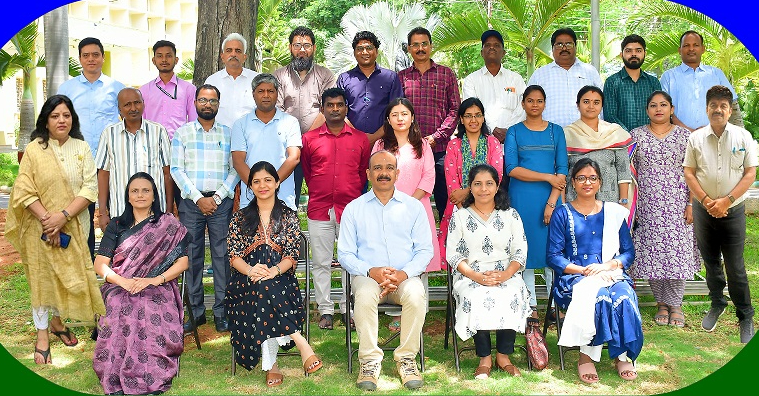
On the first day, post-registration, Dr A. Debapriya, Associate Professor, CPGS & DE, addressed the participants, giving them an overview of the regular and distance courses offered by the centre. He added that the centre has been ensuring 100 per cent placement for the past 20-plus batches.
Dr. Partha Pratim Sahu led the first formal session of the programme with an elaborate talk on rural entrepreneurship. He discussed its challenges, opportunities and strategies to develop rural entrepreneurship further. This talk was followed by a visit to the Rural Technology Park (RTP), where small businesses and entrepreneurs train people in various skills. This exposure helped the participants understand the multiple business opportunities available and the various training offered at NIRDPR in this regard.
Ms. Shruti Pragyan Sahoo took the post-lunch sessions on trends in digital media business and sales. The entire focus of the digital marketplace, which can facilitate advertising and branding of local businesses and lead one to expand their businesses beyond the local market, was explained in detail in these sessions.
On the second day, Shri Ram Mohan Naamile, a retired bank professional, took the first session. He talked about the Startup India programme and the use of venture capital. He said the focus and need of any entrepreneur is money to fund the business and shared with the participants the details of various schemes from which funding could be sought. The rest of the day was dedicated to the technical sessions by Mr Ritesh Taksande on handling the camera, making content and documentation using smartphones, and using software and hardware during filming. Mr. Ritesh Taksande also handled practical sessions on making advertisements, editing and publishing skills.
The third and final day was dedicated to demonstrations by the trainees. Mr. Ritesh Taksande analysed these demonstrations and offered suggestions, followed by feedback and post-training tests conducted by CPGS staff. Dr. Debapriya, Associate Professor, attended the valedictory of the training and handed over certificates to the participants. The third day was also a day of recreation and learning as a local visit to Shilparamam was arranged for all the participants.
In total, 22 participants from 10 states/UTs including Bihar and Maharashtra, Ladakh, Madhya Pradesh, Tamil Nadu, Telangana, Andhra Pradesh, Punjab, Uttar Pradesh and Uttarakhand attended the training programme. They included 16 government and block-level officials, five NGO representatives, and a university faculty member. As per the feedback received from participants, the overall effectiveness of the training program was 84 per cent.
Dr Akanksha Shukla, Associate Professor, CPGS & DE, coordinated the workshop with the assistance of Ms Miriyala Gamya, Project Assistant; Ms Paladugu Hymavathi, Academic Associate; and Mr Ajay Vithalrao Birajdar, Assistant Accounts Officer.
Training Programme on Next-Gen Research in Rural Development
The National Institute of Rural Development & Panchayati Raj (NIRDPR) recently conducted a training programme on ‘Next-Gen Research in Rural Development’ from 26th to 28th June 2024. The event, hosted at NIRDPR, Hyderabad, brought together distinguished experts to discuss advancements in literature review, research ethical standards, reference management, metrics, and AI integration. More than 35 participants from various states/UTs, including research scholars, academicians, and policymakers, attended the programme.
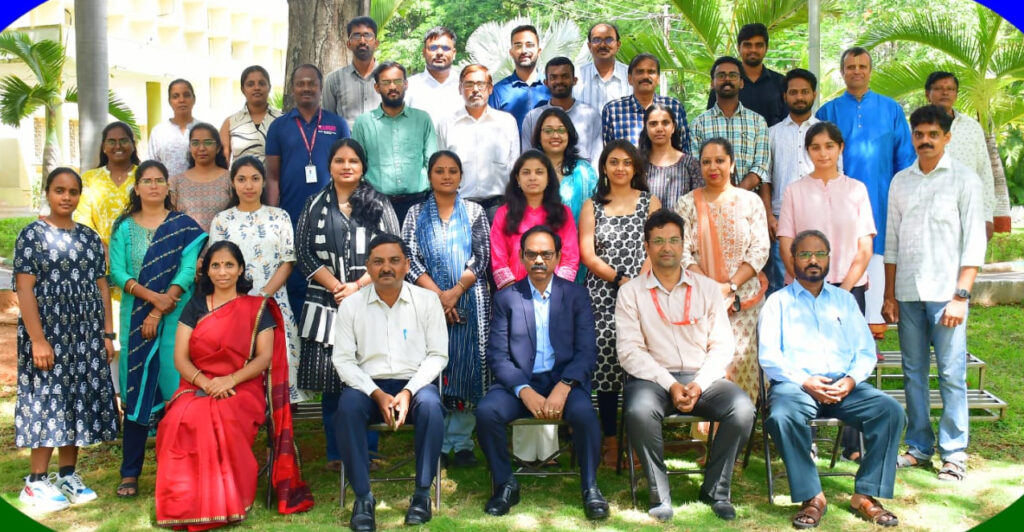
The programme commenced with an inaugural session, followed by a training overview by Dr R. Ramesh, Associate Professor, CRI, NIRDPR. Dr K. Veeranjaneyulu, Former Librarian & Head-Central Library, NIT Warangal, led a session on online information support systems for rural development research, highlighting the importance of digital resources in enhancing research capabilities. Dr Veeranjaneyulu continued discussing emerging trends in scholarly publishing and the evolving research landscape, emphasising the dynamic nature of academic dissemination.
Dr M. Padmaja, Former Senior Librarian at NIRDPR, presented the necessity of literature review in research, detailing its critical role in grounding studies within existing knowledge. In the afternoon, Dr R. Ramesh conducted a session on developing conceptual frameworks, guiding participants to structure their research with clear theoretical underpinnings.
On the second day, Dr M. V. Sunil, Faculty – Systems and General Management, SDM Institute for Management Development, Mysore, focused on leveraging AI for rural development research, demonstrating how artificial intelligence can revolutionise data analysis and research methodologies. He followed with a session on harnessing AI for effective literature review, showcasing tools and techniques for automating and enhancing the review process. Dr Sunil’s final session addressed tackling plagiarism with AI tools, providing insights into maintaining research integrity.
The third day began with a session by Dr Santosha Rathod, Senior Scientist (Agricultural Statistics), Indian Institute of Rice Research, Hyderabad, on AI-based statistical applications for rural research, illustrating the application of advanced statistical methods in agricultural research. Dr Rathod continued with a presentation on meta-analysis and its applications, offering a comprehensive overview of synthesising research findings.
In the post-lunch session, Dr R. Ramesh detailed the nuts and bolts of writing from the APA Style Guide, providing essential tips for academic writing. Dr M. V. Ravibabu, Associate Professor & Head, CICT, NIRDPR, concluded the programme with a session on selecting the right journal for publication, advising participants on strategically disseminating their research.
The training programme wrapped up with a valedictory event, marking the end of a highly informative and enriching experience for all participants. This comprehensive training has equipped attendees with cutting-edge knowledge and tools to advance rural development research.
Under the mentorship of Course Director Dr Jyothis Sathyapalan, Prof. & Head, Centre for Development Documentation and Communication (CDC), NIRDPR, Dr Umesha M. L., Assistant Librarian, CDC, coordinated the programme with the assistance of Shri P. Sudhakar, Assistant Librarian.
TOLIC-2 Organises Hindi Workshop at CSIR-IICT, Hyderabad
The CSIR-Indian Institute of Chemical Technology (CSIR-IICT), Hyderabad, organised a technical Hindi workshop under the aegis of Town Official Language Implementation Committee-2, Hyderabad, on 11th June 2024. ‘SPANDAN’, the magazine published by IICT, was released on this occasion.
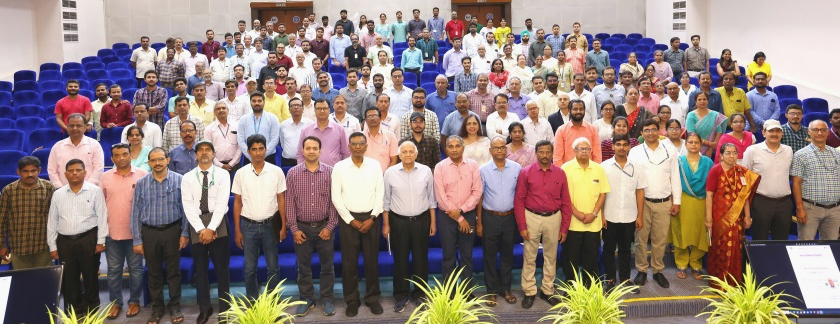
Dr R.N. Singh, former Director of CSIR-NEERI, was the chief guest of the workshop. He highlighted the importance of working in one’s mother tongue and shared his views and experience of working in CSIR-IICT. He expressed happiness over publishing the scientific and literature magazine ‘SPANDAN’ in Hindi.
IICT Director Dr D. Srinivas Reddy congratulated the scientists, officers, and employees for publishing the magazine, besides appreciating the TOLIC-2 initiatives for giving their office the opportunity to host the Hindi workshop.
A one-day workshop was organised, and RBI Additional General Manager Shri O.P. Agarwal (Retd.) introduced the participants to various tools such as MS Word, MS Excel, etc. He spoke about Artificial Intelligence tools like ChatGPT, Gemini, etc., and discussed the methods of working in Hindi on mobile.
IICT Administrative Controller Shri M. Anand Kumar said that they do not learn Hindi to develop Hindi but organise Hindi programmes for the institute’s growth.
Smt Anita Pandey, Member Secretary of TOLIC-2, appreciated the activities of the Hindi Section of IICT. More than 80 participants from member offices of TOLIC-2 participated in the workshop. Hindi Officer Dr Saurabh Kumar and his team organised this workshop. Shri Adarsh Kumar, Hindi Translator, proposed a vote of thanks.
ToT on Entrepreneurship and Sustainable Livelihood Models for Rural Communities
The Centre for Entrepreneurship Development and Financial Inclusion (CEDFI), NIRDPR, jointly with the Centre for Innovations and Appropriate Technology for Skills and Jobs (CIAT&SJ), conducted a five-day ToT on ‘Entrepreneurship and Sustainable Livelihood Models for Rural Communities’ at NIRDPR Hyderabad from 24th-28th June 2024. Participants from twelve states and diverse professional backgrounds contributed to a vibrant environment for peer learning.
The programme was designed to engage the participants in discussions on inclusive, sustainable, data-driven entrepreneurial models and their challenges. From day one, Dr Partha Pratim Sahu, Associate Professor & Head, CEDFI, reminded participants to gain knowledge and skill sets about the art of reading government schemes to ensure that strategies and policies delivered desired outcomes. He introduced the network of schemes and programmes put forth by the government for the people, emphasising the convergence possibilities of these schemes, programmes, and agencies.
The pre-training test introduced key themes, while the post-training test reassured participants that the training programme had equipped them with an extensive view of entrepreneurship and related themes.
Terms such as ‘scalable,’ ‘replicable,’ ‘sustainable,’ and ‘diversifiable’ resonated with the participants during Dr Ramesh Sakthivel, Associate Professor, NIRDPR tour of the Rural Technology Park (RTP). The RTP visit undoubtedly influenced visitors to think outside the box. The RTP fosters entrepreneurial development by raising awareness, providing training, and supporting R&D programmes, capitalising on the strengths of private entrepreneurs and government S&T institutions. The campus brilliantly accommodated entrepreneurs of varied fields and backgrounds, highlighting its inclusive nature.
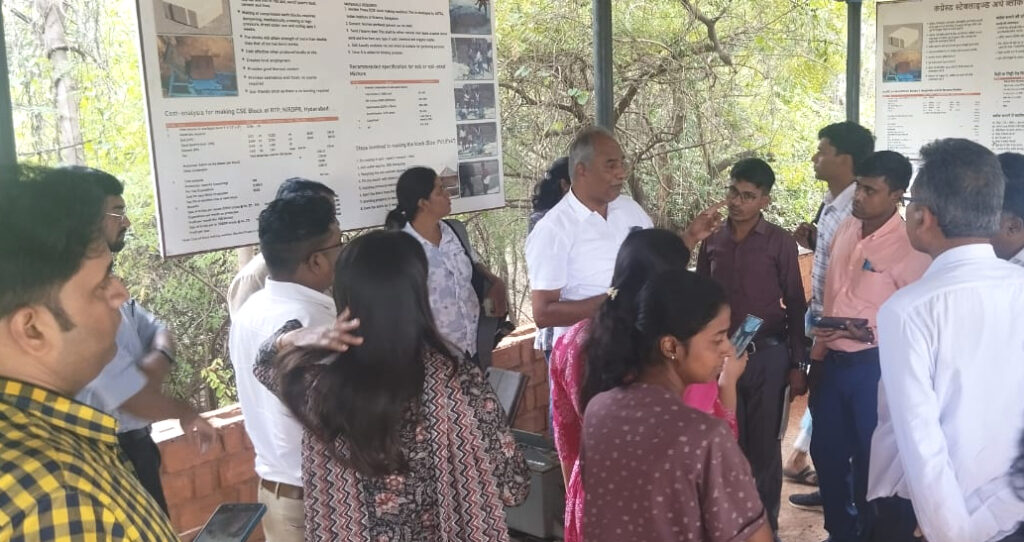
The session by Dr Shreekant Sharma, Faculty at the National Institute for Micro, Small and Medium Enterprises, detailed the government’s comprehensive strategy to support MSMEs and stimulate growth in the agricultural sector. He introduced schemes and programmes addressing significant concerns like skill development, market access, technological advancement, and financial inclusion. The formalisation and modernisation of enterprises were also discussed.
Dr Vanisree Joseph, Assistant Professor, NIRDPR, took a session on integrating gender into rural entrepreneurship and encouraged participants to explore cross-cutting issues and understand ground realities from various perspectives. The role-play as male and female entrepreneurs, bankers, government funding agencies, and community leaders provided insights into different perspectives and possible ways to bypass struggles. Dr. Ramesh Sakthivel enabled participants to brainstorm the concepts of Technology, Capitalism, Economic Growth, and Progress in the entrepreneurial scenario. The intertwined connections between innovation and economic advancement, technology and values were explored. The session also focused on rectifying the unfair incentives for unsustainable practices and building new systems that enable individuals to thrive and fully engage in society in less materialistic ways.
Dr. (Mrs.) K. Prasuna provided a thorough overview of the potential for mushroom cultivation in India as a lucrative agricultural venture. Her session included financial analysis detailing monthly income and expenditure for mushroom cultivation, and she highlighted the constraints faced in mushroom production and marketing, such as lack of infrastructure and advisory services.
Dr. Surjit Vikraman, Associate Professor, NIRDPR, led a discussion on value chain development in the food and agriculture industries. He highlighted the importance of incorporating different stakeholders—farmers, processors, traders, and consumers—to improve the agricultural value chain’s overall productivity and efficiency. The session offered a thorough analysis of the elements necessary for successfully developing agricultural value chains, emphasising innovation, teamwork, and sustainability as critical success factors. Various value chain approaches were introduced.
Mr. L. Ravi Teja’s session served as a manual for those interested in growing, extracting, and selling aromatic plants and essential oils. He engaged with the participants on the cultivation of aromatic crops and the extraction of essential oils, emphasising the need to return to traditional methods to improve soil health and reduce costs. Issues with organic products, such as inconsistent results and low government support, and sustainable farming approaches to meet today’s agricultural challenges were also discussed.
Ms Bala Sahithi Karavadi’s interactive session on management introduced the principles required for scaling up rural entrepreneurship. The principles of vision and leadership, strategic planning, innovation and technology, operational efficiency, customer focus, financial management, talent management, governance, and ethics were coupled with relatable entrepreneurial success stories like Lijjat, AMUL, and Licious. The session emphasised the importance of community engagement, sustainable practices, adaptability, and innovation for rural businesses to thrive.
Dr. Nithya V. G., Assistant Professor, NIRDPR, handled a session on Collectives and Aggregation Models: The Case of FPOs, emphasising the promotion of Farmer Producer Organisations (FPOs) in India. She highlighted their potential to enhance farmers’ income and market access, enable collective bargaining, reduce transaction costs, and improve access to resources. Dr. Jyoti Prakash Mohanty, Deputy Director of NRLM-Resource Cell, introduced the case study on ORMAS – Odisha Rural Development and Marketing Society. Even though ORMAS is a popular brand name, many were unaware of the extensive and innovative work it handles. It exemplifies how fostering sustainable livelihoods through the establishment and support of producer groups, FPOs, and various marketing activities has substantially influenced Odisha’s rural economy. Participants also visited the a-IDEA incubator at ICAR NAARM (National Academy of Agricultural Research), broadening their knowledge of the incubation and funding avenues that support potential agri-entrepreneurs.
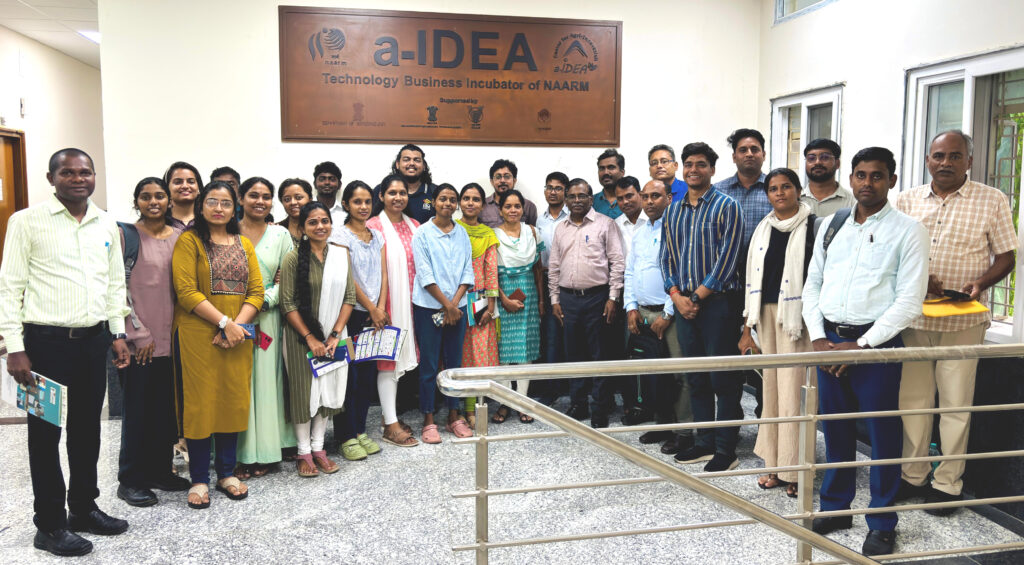
The training served as a valuable platform for understanding the opportunities and support mechanisms available to agricultural entrepreneurs and MSMEs, showcasing the government’s commitment to economic development and job creation in these vital sectors. It’s commendable that numerous schemes prioritise inclusive growth, with a particular focus on women and underrepresented communities. The fruit of the ToT is sure to foster collaboration among entrepreneurs, policymakers and others to leverage government schemes through its cohorts. As the title indicates, the training has played its part in crafting participants who will, in turn, influence the rise of existing and aspiring entrepreneurs in their rural communities.
Dr Partha Pratim Sahu and Dr Ramesh Sakthivel jointly coordinated this programme.
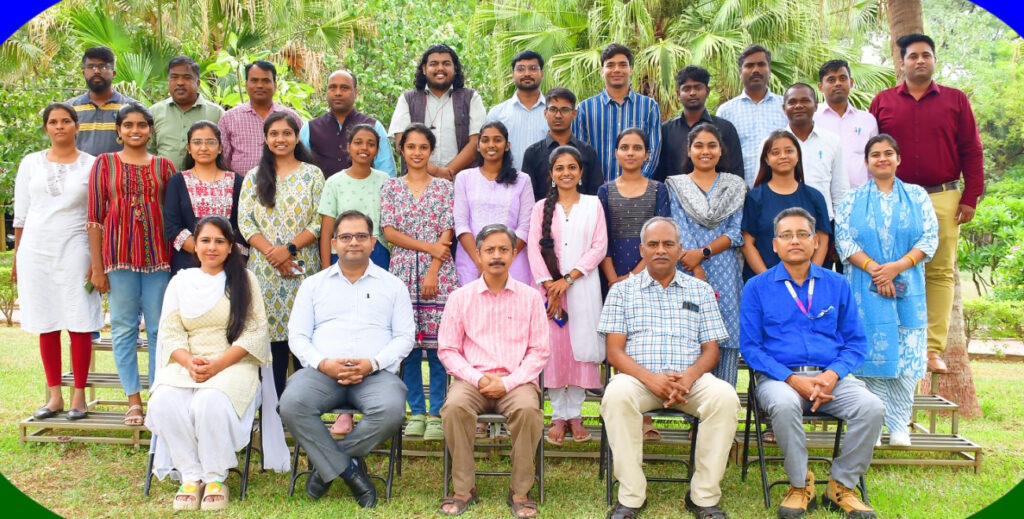
(This report is prepared by a participant, Ms Riya Tomy, Aspirational Block Fellow, Kerala, with inputs from Dr Partha Pratim Sahu)
CASE STUDY:
Examining Efficiency and Inter-Firm Linkages in the Ragi Value Chain of Bhurmuni, Uttarakhand
Mr Ashutosh Dhami
Student, PGDM-RM, NIRDPR
tashudham@gmail.com
Introduction
Ragi holds immense potential in Uttarakhand, where it is part of traditional farming systems for small-scale farmers. It thrives with minimal inputs and resists pests and diseases, salinity, short growing seasons, waterlogging and drought. In addition to its nutritional profile which includes high contents of calcium and potassium, these qualities make it a critical crop for food security as well as economic stability in many rural communities.
Finger millet remains largely underutilized despite its importance, especially in the tropics plus semi-arid areas. These attributes provide potential for improving food security and developing value-added products, particularly in developing countries. A substantial population of Uttarakhand depend on agriculture, where finger millet is vital in smallholder farmers’ livelihoods, more so those practising subsistence farming in hilly areas.
Cultivation and Production Dynamics
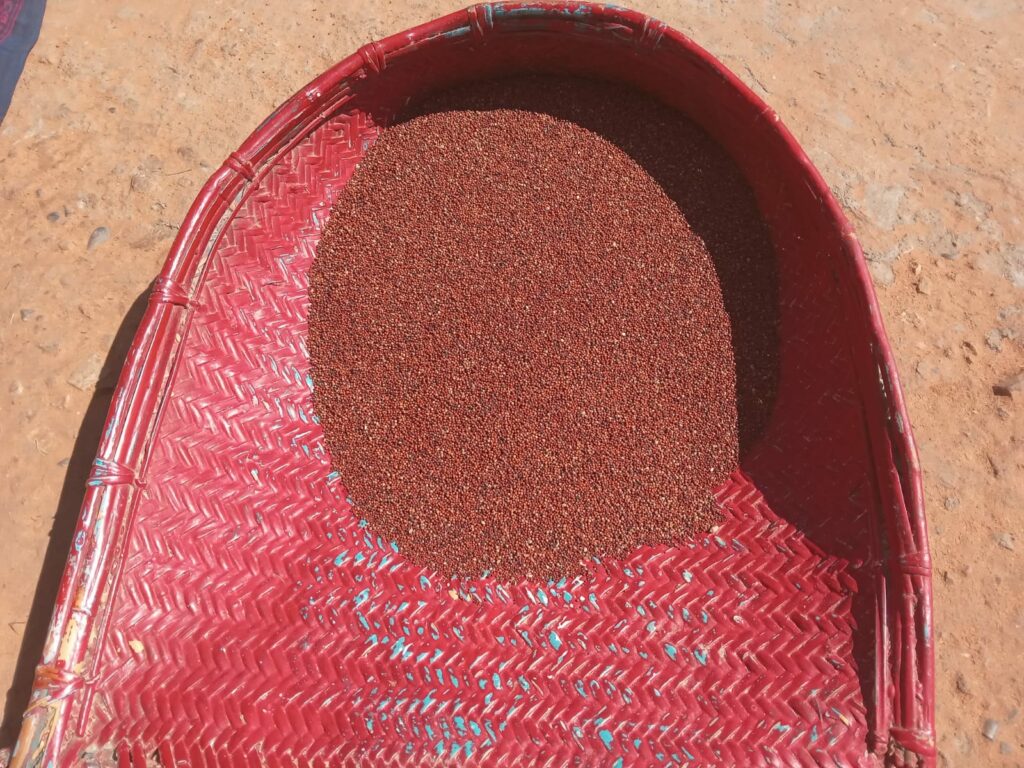
In this article, the author examines the dynamics of the ragi value chain, focusing on Bhurmuni village in Pithoragarh district of Uttarakhand. A substantial population of Uttarakhand depends on agriculture, where finger millet is vital in smallholder farmers’ livelihoods, more so those practising subsistence farming in hilly areas. Madua is the local name for Ragi in Uttarakhand, where it is part of traditional farming systems for small-scale farmers. In Bhurmuni, ragi cultivation is not merely a source of sustenance but a cornerstone of livelihoods, particularly for small and marginal farmers. These hardworking individuals allocate a substantial portion of their land to ragi, underscoring its adaptability and economic significance. Despite facing obstacles like pest infestations and irrigation constraints, farmers persevere, driven by the crop’s nutritional benefits and market demand.
The distribution of land holdings reveals that a majority of farmers in Bhurmuni are small and marginal. This demographic underscores the critical role of ragi in supporting subsistence farming in hilly areas, where alternatives like rice and soybean also find their place but do not match the versatility and resilience of ragi. Farmers allocate approximately 55% of their land to ragi cultivation, reflecting its adaptability to local environmental conditions and its economic importance within the community.
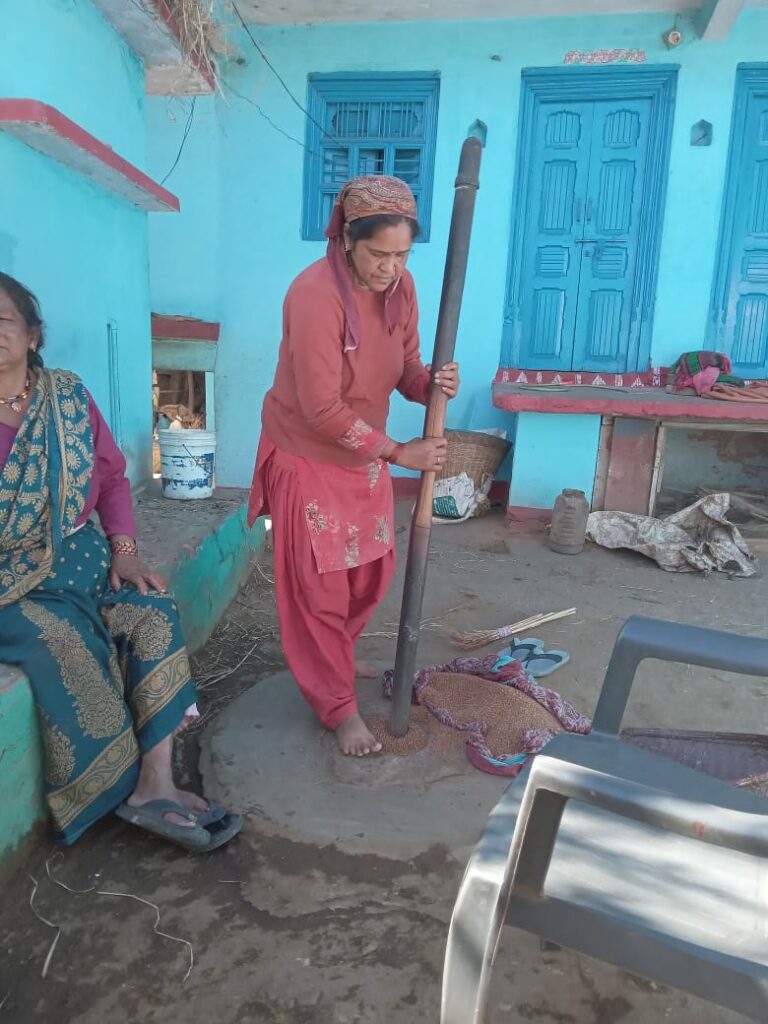
Annual yields of ragi vary significantly, influenced by diverse agronomic practices, resource availability, and socio-economic factors. Farmers report yields ranging from 10 to 50 kg per hectare in less favourable conditions, while optimal practices and favourable conditions can yield more than 500 kg per hectare. This wide variation underscores the need for targeted interventions to improve farming practices, enhance soil fertility, and mitigate the impact of climatic fluctuations on crop yields.
Challenges in the Ragi Value Chain
The ragi value chain in Bhurmuni faces multifaceted challenges across its various stages, from cultivation to processing and marketing. At the cultivation stage, farmers encounter difficulties such as limited access to quality seeds, inadequate irrigation facilities, and pest infestations. These challenges not only affect productivity but also contribute to post-harvest losses and economic instability among smallholder farmers.
Inadequate infrastructure at aggregation centres poses challenges at the aggregation and processing stages. Lack of proper quality control measures and storage facilities results in product quality issues, affecting market competitiveness and consumer confidence. Moreover, the absence of modern processing equipment and skilled labour further impedes efficiency and quality assurance in ragi processing units.
Market dynamics also present significant challenges for stakeholders in the ragi value chain. Shifting consumer preferences, limited awareness about ragi’s nutritional benefits, and fluctuating market demands pose obstacles to market penetration and product diversification. These challenges underscore the need for strategic interventions aimed at enhancing consumer education, improving product visibility, and fostering market linkages for ragi-based products.
Interventions and Innovations
Recognizing the need for targeted interventions, local institutions and government agencies have initiated several initiatives to strengthen the ragi value chain in Bhurmuni. The Krishi Vigyan Kendra (KVK) and the District Department of Agriculture play pivotal roles in providing technical support, training programs, and access to high-quality seeds for farmers. These initiatives aim to enhance agricultural productivity, promote sustainable farming practices, and improve resilience to climate variability.
Capacity-building programs implemented by institutions like the SBI Rural Self-Employment Training Institute (RSETI) have empowered women farmers through training in ragi processing, entrepreneurship, and market access. These programs equip women with the skills and knowledge needed to actively participate in the ragi value chain, thereby promoting gender inclusivity and economic empowerment within the community.
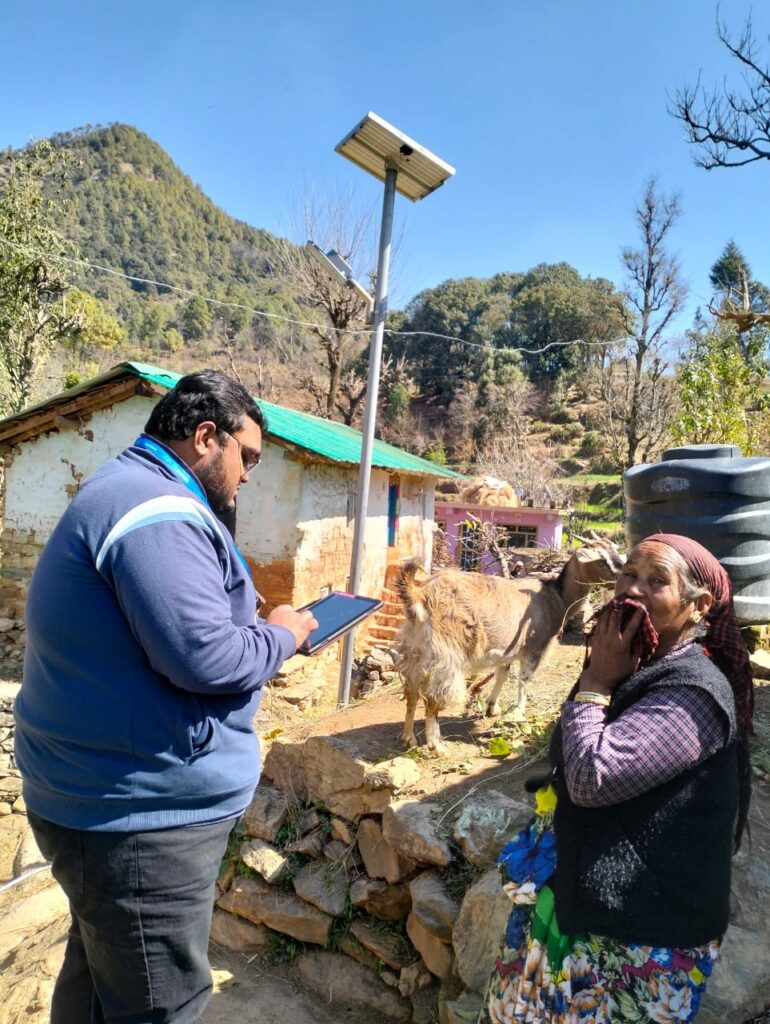
Efforts to establish producer companies and strengthen collaboration among stakeholders are crucial steps toward enhancing the efficiency and sustainability of the ragi value chain. Producer companies provide a platform for farmers to aggregate their produce, access collective bargaining power, and streamline market access. These initiatives not only foster economic self-reliance but also promote collective action and community development in Bhurmuni village.
The Role of Women in Ragi Value Chain
Women play a pivotal role in the ragi value chain in Bhurmuni, contributing significantly to both cultivation and processing activities. Traditionally marginalized in agriculture, women have emerged as key stakeholders in initiatives aimed at revitalizing traditional crops like ragi. Capacity-building programs and entrepreneurship training have enabled women to take on leadership roles in producer companies, fostering a culture of innovation and sustainability in agricultural practices.
In addition to their contributions to farming and processing, women in Bhurmuni are instrumental in preserving traditional knowledge and cultural practices associated with ragi cultivation. Their involvement in decision-making processes and community initiatives has empowered them to advocate for sustainable agricultural practices and equitable access to resources.
Market Dynamics and Consumer Preferences
Consumer awareness and demand for ragi-based products play a crucial role in shaping market dynamics in Bhurmuni. While traditional products like ragi flour and namkeen enjoy steady demand, diversification into newer products such as ragi ladoo and biscuits faces challenges related to consumer acceptance and market penetration. Strategies aimed at enhancing consumer education, promoting the nutritional benefits of ragi, and improving product packaging and branding are essential for expanding market reach and stimulating demand.
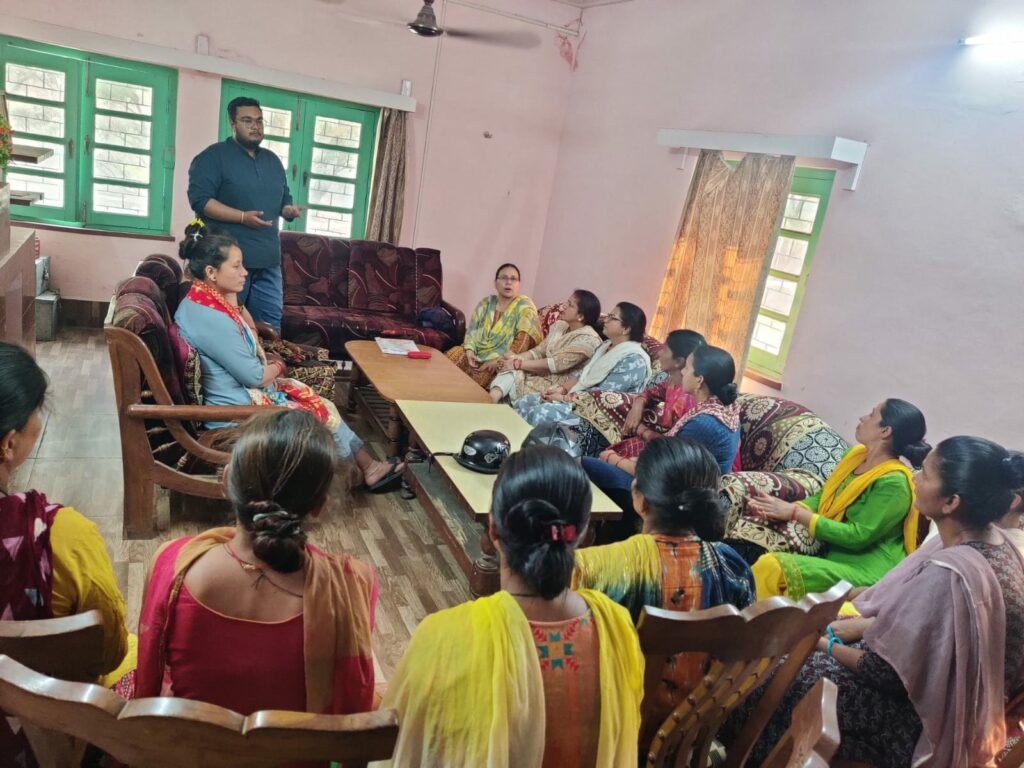
Efforts to establish market linkages and explore alternative sales channels, including online platforms and direct consumer engagement, present opportunities for expanding market reach and increasing product visibility. These initiatives not only diversify revenue streams for stakeholders but also contribute to the overall growth and sustainability of the ragi value chain in Bhurmuni.
Future Prospects and Sustainability
Looking ahead, the sustainable development of the ragi value chain in Bhurmuni hinges on collaborative efforts, informed policies, and community engagement. Strengthening infrastructure, enhancing quality control measures, and fostering market linkages are critical steps toward improving productivity, ensuring food security, and promoting economic resilience among smallholder farmers.
Empowering women through capacity-building programs, promoting gender-inclusive policies, and fostering entrepreneurial skills will play a pivotal role in enhancing the role of women in the ragi value chain. By leveraging technological innovations, sustainable farming practices, and market-driven strategies, stakeholders can unlock new opportunities for economic growth and community development in Bhurmuni village.
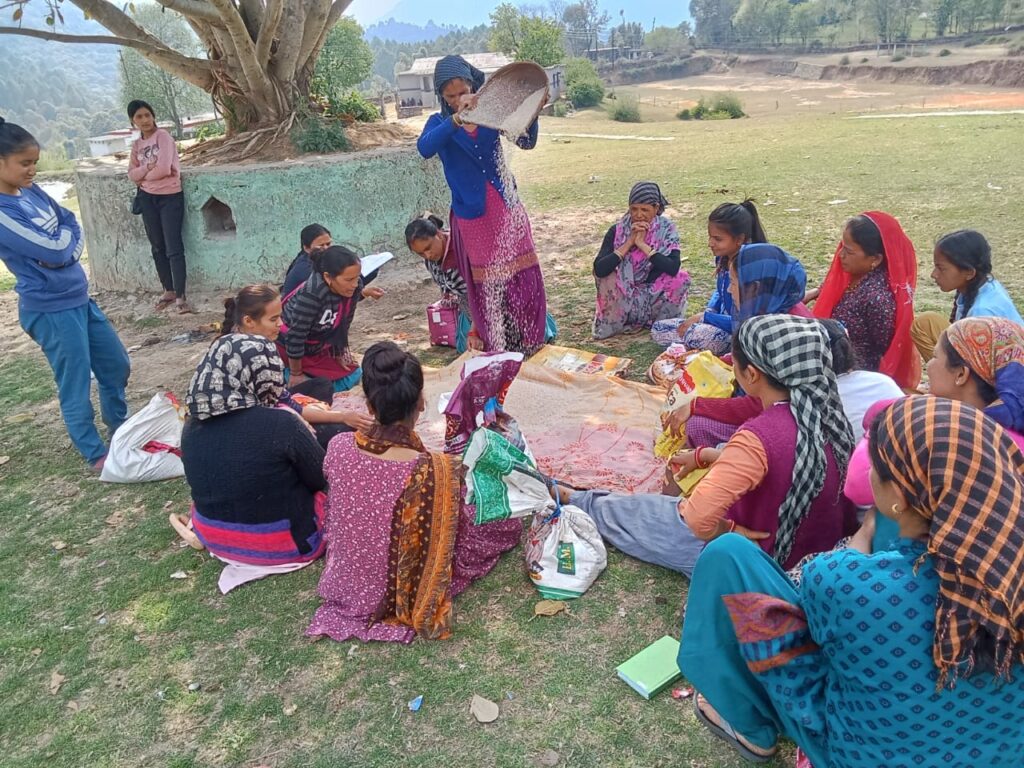
Conclusion
In conclusion, the ragi value chain in Bhurmuni village exemplifies both the challenges and opportunities inherent in revitalizing traditional crops and promoting sustainable agriculture. By addressing systemic challenges and leveraging innovative solutions, stakeholders can unlock new opportunities for economic growth, food security, and community development.
As efforts continue to bear fruit, Bhurmuni stands poised to emerge as a model for sustainable agricultural practices and inclusive economic development. By nurturing a vibrant and resilient ragi value chain, stakeholders can create lasting impact, empower local communities, and ensure a prosperous future for generations to come.
(This note is drawn from a 3-month internship report prepared under the guidance of Prof. Jyothis Sathyapalan, Dr Partha Pratim Sahu, Associate Professor, NIRDPR and Mr Nikhilesh Joshi, Director -SBI Rural Self Employment Training Institute (SBI RSETI), Pithoragarh, Uttarakhand)
ToT on Establishment and Functioning of Gender Resource Centres under DAY-NRLM
Gender Resource Centres (GRCs) promoted under DAY-NRLM provide a vital platform for rural women in all the states to raise issues and influence policy-level changes by advocating for the cause of the marginalised and emphasising the strength of collective actions. GRCs provide integrated support, services and guidance to rural women and marginalised sections under one roof. This includes rights & entitlements, medical, psychological, legal, shelter, rehabilitation and other counselling support through its reference mechanism.
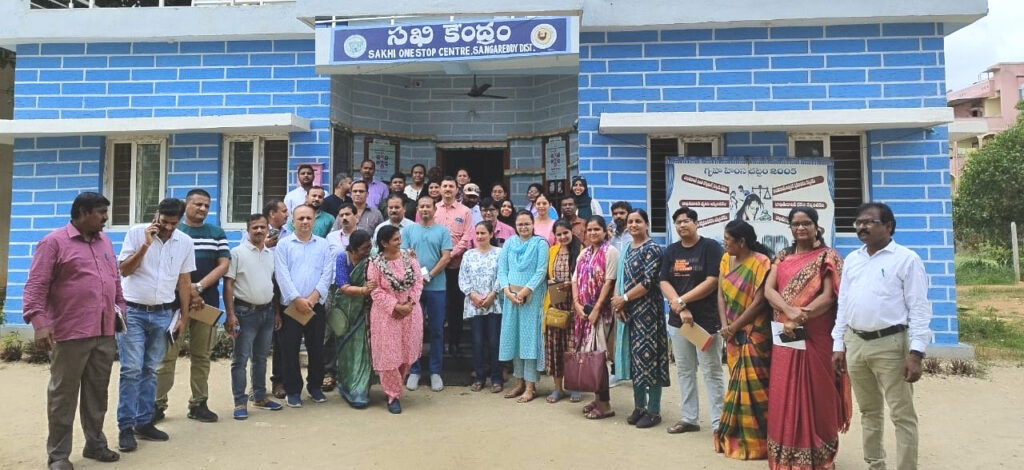
The DAY-NRLM Resource Cell of the National Institute of Rural Development and Panchayati Raj (NIRDPR) organised two batches of a 3-day Training of Trainers (ToT) on the Establishment and Functioning of Gender Resource centres under DAY-NRLM from 20th to 22nd June 2024 on the Institute’s Hyderabad campus. Fifty SRLM officials from 12 states attended the programme.
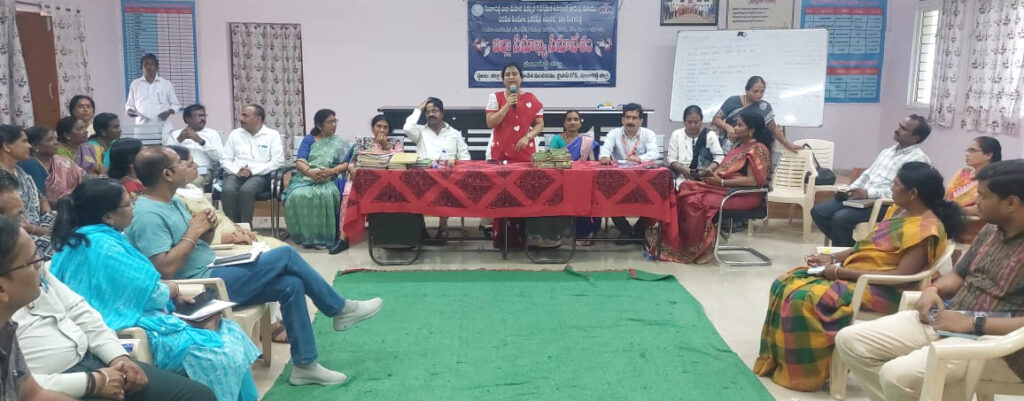
The objective of the programme was to enhance the knowledge of the participants on the establishment and functions of Gender Resource Centres. Key topics facilitated by resource persons Ms A. Kalamani, Ms P. A. Devi, Mr K. Venkateswara Rao and Mr Rajeev Ranjan Singh included Gender mandate within the NRLM framework, Institutional mechanisms, Background and need for a Gender Resource Centre, Objectives and Guiding Principles of GRC, Structure of Gender Resource Centre, and Role, Responsibilities & Services provided by Gender Resource Centre.
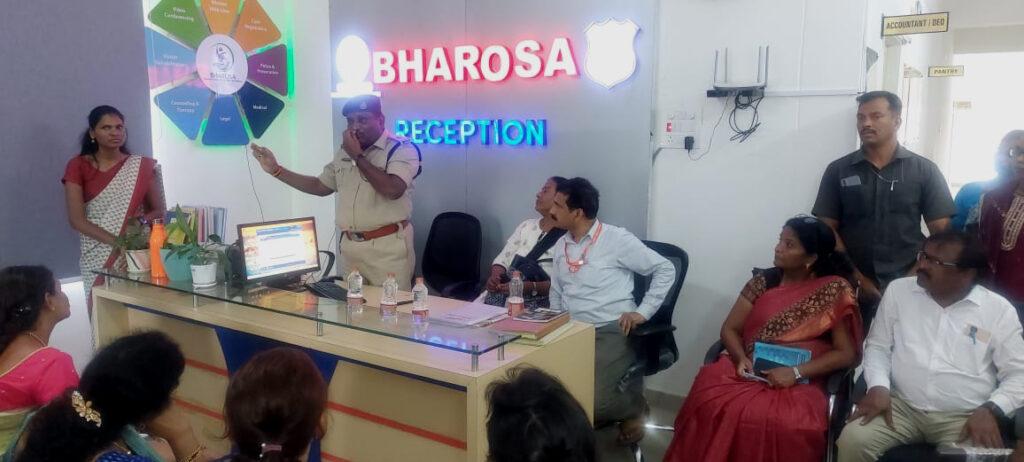
For practical exposure and contextual understanding of the participants, a one-day field visit was also organised to Sangareddy district, Telangana, where participants interacted with beneficiaries and functionaries of Sakhi Manch (One-stop Centre), Bharosa Centre, GRC and Gender committee of District Federation.
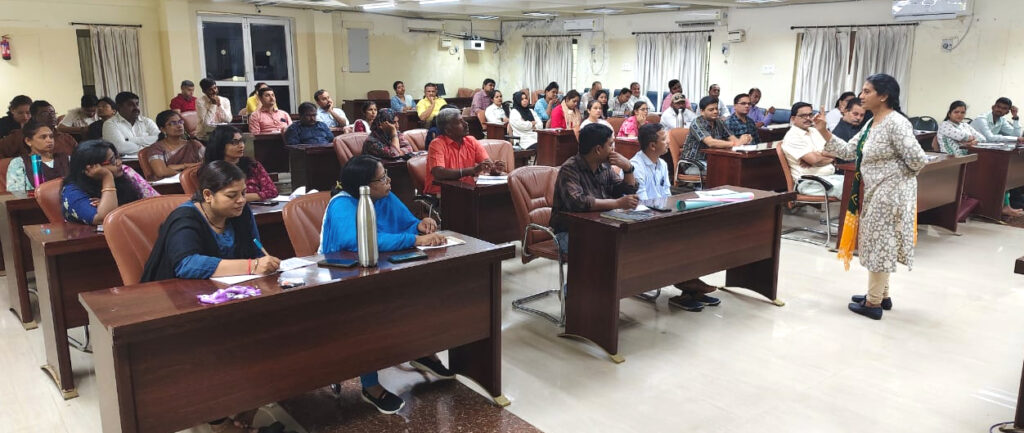
After the training, participants will train the SRLM Staff and cadre in their respective states in a cascading mode for the establishment and quality operation of Gender Resource Centres.
(This report was prepared by Mr Rajeev Ranjan Singh, Mission Executive, DAY-NRLM Resource Cell, with inputs from Dr Ch. Radhika Rani, Associate Professor and Director-DAY-NRLM Resource Cell, NIRDPR)
6th Management Development Programme on Rural Development Leadership for Block Development Officers
The Centre for Human Resource Development (CHRD) of the National Institute of Rural Development and Panchayati Raj (NIRDPR), Hyderabad, conducted a five-day training programme on Management Development Programme on Rural Development Leadership for Block Development Officers (BDOs) from 18th -22nd June 2024 at its campus. As many as 32 BDOs from Telangana, Arunachal Pradesh, Maharashtra, Chhattisgarh, Tripura, Jammu & Kashmir, Andhra Pradesh, Kerala, Haryana, Puducherry, and Punjab attended this programme, which was fifth in the series.
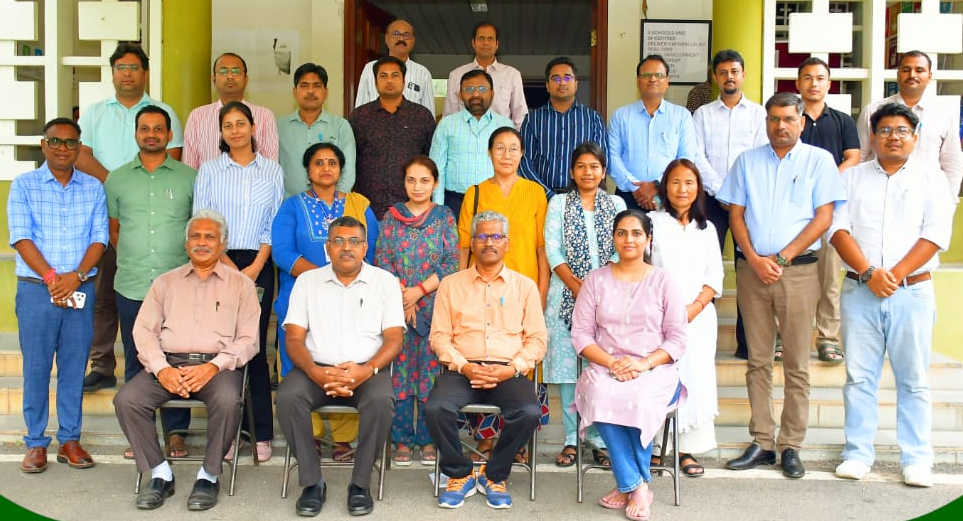
The main objectives of this programme were to orient the BDOs on concepts of management and rural development relevant to block administration, enable them to learn distinctions of different flagship programmes and the strategies to address the developmental issues, make them recognise their potential to address various social sector issues, and equip the BDOs with skills to prepare Block Development Vision Plan.
Dr Lakhan Singh, Assistant Professor, Centre for Human Resource Development, NIRDPR, coordinated this programme. Before the commencement of the programme, he explained the need, demand and importance of the programme, course design and content. He further detailed the outcome that would enable the BDOs to discharge their duties more effectively when they are back in their positions.
The eminent and subject matter specialists delivered the key sessions such as MGNREGS: A critical assessment of its performance since inception, Role of SMEs in rural development, Issues of basic education in rural India with special focus on Samagra Shiksha, Approaches and strategies towards localisation of Sustainable Development Goals, Issues and challenges in sustaining ODF villages, Understanding gender issues for rural development, Transparency and accountability for good governance, Leadership qualities, Rights-based development and social accountability through social audit mechanism, Communication and soft skills including behaviour management, Pradhan Mantri Gramin Sadak Yojana: use of geo-informatics system, Paradigm shift in rural development, Skilling of rural youth through Deen Dayal Upadhyaya Grameen Kaushalya Yojana: role of BDOKs, Scenario of drinking water in rural India, Preparation of Block Development Vision Plan based on ABP goals, etc.
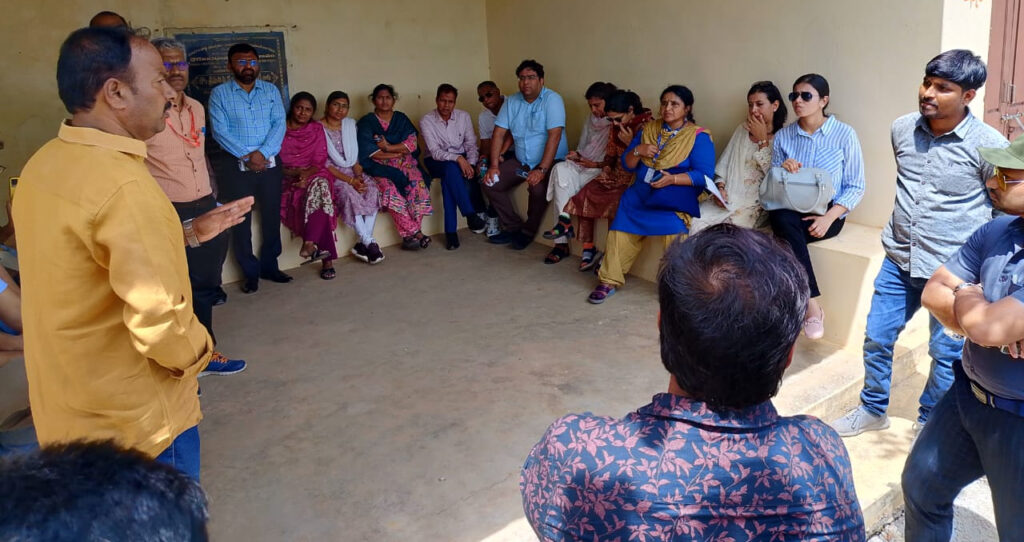
The participants were taken on a field visit to a nearby Saraswatiguda model gram panchayat in Kandukur Mandal of Ranga Reddy district in Telangana, where they had the opportunity to witness the developmental activities carried out and interact with the functionaries of Gram Panchayat. In addition, they visited Rural Technology Park (RTP), located on the Institute’s campus, for a demonstration of appropriate technologies for rural development.

The programme was evaluated on a five-point scale by the BDOs, who rated it as excellent. During the valedictory session, the BDOs appreciated the Course Director for designing the programme by covering all the necessary topics required for improving their skills and knowledge. The field visit to a model gram panchayat was more informative, where they were briefed about the best practices and success stories.
The participants expressed their utmost satisfaction with the facilities provided to them during their stay on the Institute’s campus.
At the valedictory session, the Programme Director handed over the certificate of participation to the BDOs.
Three-Day Training on Roadmap to Achieve SDGs through Mahatma Gandhi NREGS
The Centre of Wage Employment & Livelihoods, National Institute of Rural Development and Panchayati Raj conducted a three-day training programme on ‘Roadmap to Achieve SDGs through Mahatma Gandhi NREGS’ from 19th to 21st June 2024 on its campus in Rajendranagar, Hyderabad.
Mahatma Gandhi NREGA plays a vital role in achieving the sustainable development goals. The goals include eradication of poverty, food security and improved nutrition, promote sustainable agriculture, ensuring inclusive and equitable quality education, gender equality and empowering all women and girls, ensuring availability and sustainable management of water and sanitation for all, productive employment and decent work for all, build resilient infrastructure, reduce inequality, climate change and its impacts, etc. Localisation is the process of taking into account subnational contexts in achieving the 2030 Agenda – from setting goals and targets to determining the means of implementation and using indicators to measure and monitor progress.
The training programme intended to discuss the achievement of the SDGs through action from the bottom-up approach, which is a key feature of Mahatma Gandhi NREGA and how the SDGs can provide a framework for local development policy. While the SDGs are global, their achievement will depend on one’s ability to make them a reality in a specific region. All SDGs have targets directly related to the responsibilities of local and regional governments, particularly in delivering basic services. For this reason, local and regional governments must be at the heart of the 2030 Agenda. Local spaces are ultimately the key site of delivery and development; as such, local government is central to the success of sustainable development.

The training programme started with the registration of 36 officials from different states. Dr C. Dheeraja, Head (i/c), Centre for Wage Employment & Livelihoods, inaugurated the training programme. She delivered the opening remarks and emphasised the primary objectives of Mahatma Gandhi NREGA. Following her interaction with the participants, a pre-training quiz was conducted.
Dr Digambar A. Chimankar, Associate Professor and Director of the training programme, took sessions on Mahatma Gandhi NREG Act & Guidelines, Preparation of Labour budget addressing SDGs, Convergence of MGNREGS with other programmes to achieve SDGs, Climate Resilience and MGNREGA Permissible Works under Mahatma Gandhi NREGS & SDGs Management of Common Property Resources & MGNREGA Localisation of SDGs through MGNREGS, Mapping of MGNREGA Permissible works for achieving SDGs: Activity-based session.
Dr Sonal Mobar Roy, Assistant Professor, discussed Sustainable Development Goals and Social Inclusion & Gender Sensitisation under MGNREGS. Dr Ramesh Sakthivel, Associate Professor, took a session on Sustainable Technologies in Rural Development, while Dr P. Anuradha, Assistant Professor, talked about Case Studies on MGNREGA.
Dr Digambar Chimankar and Dr Sonal Mobar Roy conducted the training with the support of Mr B Ramesh, Training Manager, Dr Jayasree Junior Fellow, Dr Tandra Mondal, Research Associate and Mr Naresh Kumar, Project Assistant-cum-Accountant.
Telugu Classes for Officials Begins at NIRDPR

Weekly Telugu classes for the faculty and staff members of the National Institute of Rural Development and Panchayati Raj, from 19th June 2024.
About 25 officers/employees attended the Telugu class on the first day. Mrs. Annapurna, Junior Hindi Translator, welcomed the Telugu teacher, officials and staff to the Telugu class. Since NIRDPR is an institute associated with rural development and panchayati raj, the faculty members were finding it challenging to work in rural areas without sound knowledge of the Telugu language. Moreover, many other employees expressed willingness to learn the Telugu language; hence, the competent authority approved basic Telugu language classes. Learning the Telugu language will make it easier for officers/employees to work and interact with rural people while visiting rural areas.
Mrs. V. Annapurna, Junior Hindi Translator, is coordinating the classes. The above class was conducted under the guidance of Smt Anita Pandey, Assistant Director (OL), and other staff members of the OL section coordinated.
NIRDPR Observes International Day of Yoga 2024
The National Institute of Rural Development and Panchayati Raj observed the International Day of Yoga. As part of the celebrations, a special session was organised at the Sports Complex on the Institute premises on 21st June 2024.
Shri K. Manoj Kumar, Registrar & Director (Admn), Dr Pranab Kumar Ghosh, Assistant Registrar (E), Dr S. Raghu, Assistant Director, Administration (Section-I), faculty members, staff and their family members attended the event. Shri K. Manoj Kumar addressed the gathering and welcomed the guests. Shri Mahendra Guru, Yoga practitioner and motivational speaker and Shri Suresh Babu, Yoga instructor, graced the occasion as guests and led the Yoga sessions.
Shri K. Manoj Kumar felicitated the guests. Shri K. C. Behera, Public Relations Officer, coordinated the event.
PHOTOS & VIDEO:
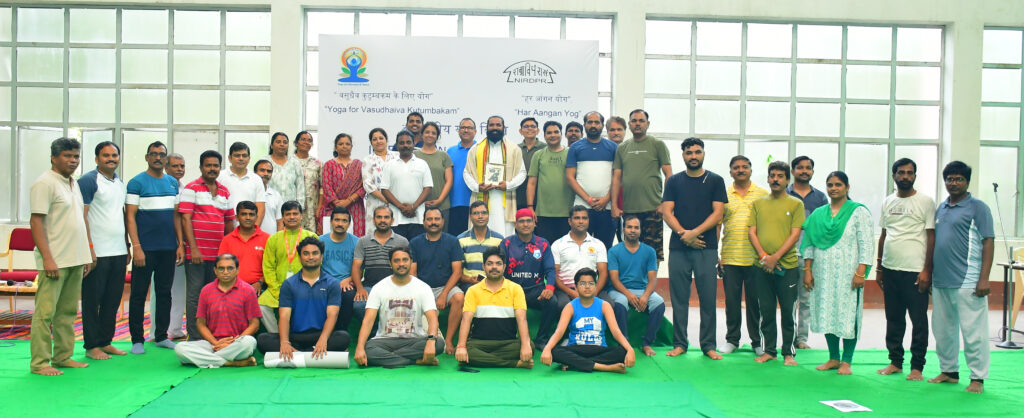
UBA ACTIVITIES:
HeART Programme: Orientation for MBBS Students in Community Service under UBA
Unnat Bharat Abhiyan (UBA) is a flagship programme of the Ministry of Education, and under UBA, NIRDPR serves as a Subject Expert Group as well as a Regional Coordinating Institute.
Sri Sathya Medical College and Research Institute, one of the UBA Participating Institutions from Chennai, organised a Health Appraisal by Rapid Techniques (HeART) Programme in collaboration with the Unnat Bharat Abhiyan (UBA).
It was designed to provide first-year MBBS students with practical training in community health appraisal using rapid data collection techniques. Spanning six days, the programme aimed to equip 215 students with the skills necessary for qualitative research and to enhance their understanding of rural health issues. Combining theoretical knowledge with hands-on fieldwork in the UBA-adopted Keerapakkam village, the HeART Programme sought to bridge the gap between medical education and real-world health challenges, fostering a deeper appreciation for community-based healthcare among future doctors.
The HeART (Health Appraisal by Rapid Techniques) Programme commenced with a pre-test questionnaire to gauge the baseline knowledge of the 215 first-year MBBS students from Sri Sathya Medical College and Research Institute. Head of the Department oriented the students to the objectives and structure of the programme. Dr Surekha led a session on the basics of qualitative research methods, introducing tools like participatory rural appraisal (PRA), transect walks, social mapping, and various analysis techniques. The afternoon was dedicated to enhancing communication skills, which is critical for effective doctor-patient and community interactions. The day concluded with the formation of sub-groups for the subsequent field visit to Keerapakkam village, a UBA-adopted village.
On day 2, students were taken to Keerapakkam village and were divided into groups for hands-on experience with PRA tools. Each group, guided by faculty members, conducted transect walks and social mapping activities with local villagers, collecting valuable data. The afternoon session focused on translating this data into visual charts and models, fostering a practical understanding of community health appraisal. The exercise honed the students’ data collection skills and provided insights into the health issues and needs of rural populations.
Day 3 introduced the students to the Family Adoption Programme (FAP) initiated by the NMC, highlighting the long-term engagement with adopted families. They received hands-on training with Epi-Collect, a mobile-based data collection tool, and learned to assemble first-aid kits. In recognition of World Leprosy Day, an elocution contest was held to raise awareness about the disease. The day also included sessions on public health essentials and hospital services provided by SSSMCRI, preparing students for their next field visit.
On the fourth day, students revisited Keerapakkam village to collect demographic data from assigned families. The afternoon was dedicated to data entry and analysis, guided by Dr Karnaboopathy, who provided a session on basic data management techniques. This exercise taught students the importance of accurate data collection and analysis in public health research.
On Day 5, students completed their charts and models from the PRA activities. They prepared PowerPoint presentations for the final day, and the afternoon featured the much-anticipated movie review and elocution contest, making learning interactive and enjoyable.
On the sixth day, the programme concluded with students showcasing their PRA charts and models, followed by group presentations summarising their week-long activities. Post-test evaluations and feedback were collected, revealing significant knowledge gains among the students. Prizes were awarded for the best presentations and models, and the first-aid kits prepared by students were distributed to the villagers, who expressed their appreciation.
The HeART Programme was a resounding success, providing MBBS students with a deep understanding of qualitative research methods and community health issues. The feedback indicated that the students found the tools taught practical and beneficial, laying a solid foundation for their future roles in healthcare.
Computer System and Solar Light Donated to Government Schools of Adopted Villages
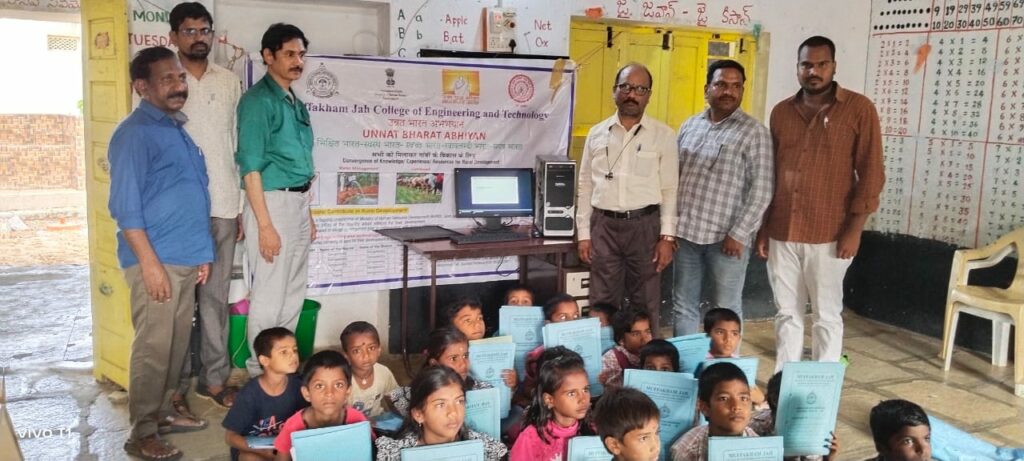
As part of the Unnat Bharat Abhiyan (UBA) initiative to enhance the calibre of the teaching and learning process, the UBA participating institution, Muffakham Jah College of Engineering and Technology at Banjara Hills, Hyderabad, provided two computers to a government school at the adopted villages of Hanuman Nagar and Tunikila Thanda in Sangareddy district. The objective was to promote awareness and improve learning using online tools such as the Diksha website etc. and Microsoft Office.
Muffakham Jah College also distributed solar lights to school students of Gudi Thanda, Sangareddy to facilitate their studies in the wake of power cuts.
Dr Mohammad Sadak Ali Khan, Professor, MED, coordinated the programme with the help of UBA Cell members & Assistant Professors Dr V. Dharam Singh, Dr K. Mohammad Rafi, Mr Barkat Ali Khan, and Dr Shaik Irfan Sadaq.
SIRD/ETC CORNER
Skills Training Programme on Soap & Candle Making at ETC, Nongsder
The Extension Training Centre at Nongsder in Meghalaya conducted a 3-day Skills Training Programme on ‘Soap & Candle Making’ for the members of the self-help groups, village employment councils and rural youths in Nongstoin C&RD Block and Mawkyrwat C&RD Block.

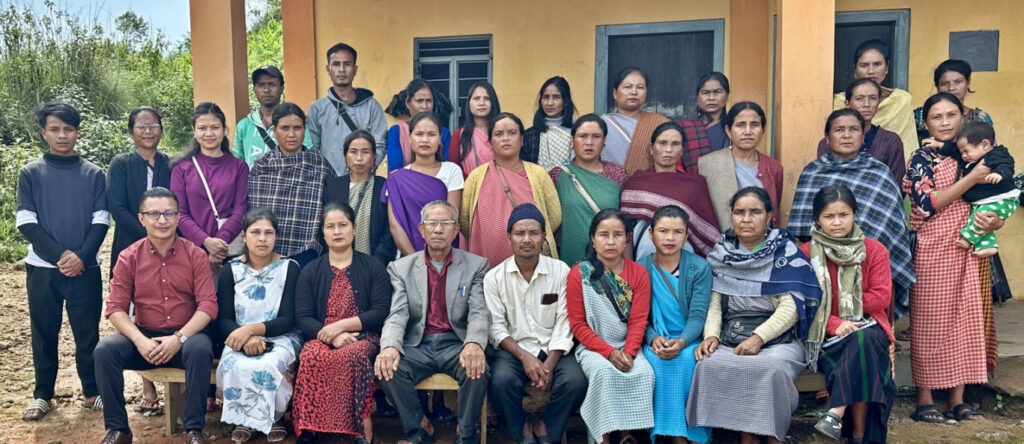
The methodology used for the training programme included lecture-cum-discussion, hands-on and live demo. It was also supported by audio-visual aids and PowerPoint presentations. Shri Lambok Dhar, Faculty Member, ETC Nongsder, coordinated the programme. The resource persons were drawn from the District and Block officials and SHG Cadres of DAY-NRLM.
Soap and candle making is an art form and has become decorative works of art that come in an infinite variety of shapes, sizes, colours & fragrances. They are used to create a peaceful, romantic ambience and are treasured for their relaxing effect. Soap and candles have recently become a big part of home decor, and this has encouraged the development of new techniques and materials.

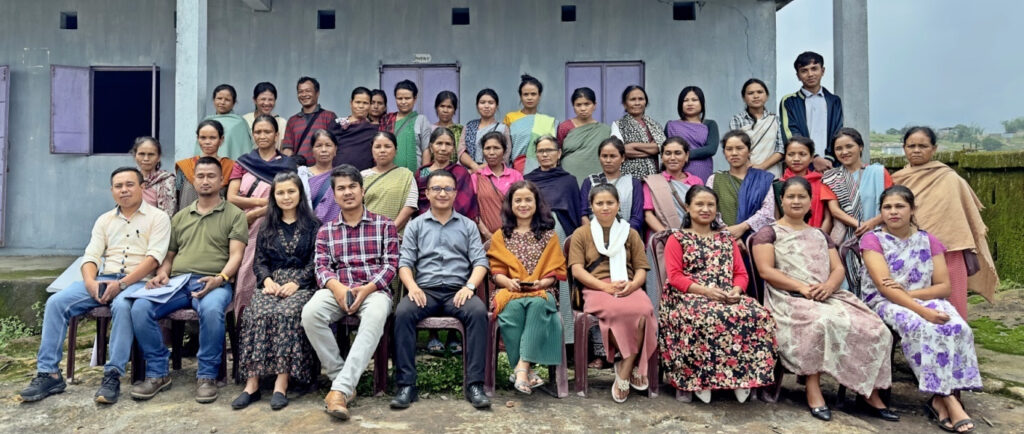
The training aimed to provide participants with the basic knowledge, skills and techniques required to build a home-based business. This course was designed to develop the participants with the knowledge and skills to equip them with the tools necessary to enable them to develop marketable skills, become employable, encourage entrepreneurial development and the use of best practices.

Participants learnt the art of candle and soap making, from information on basic ingredients to custom creations. Participants were introduced to the theory and practical techniques as well as different types of materials/resources and equipment used in Soap and Candle Making.
At the end of the training, participants were able to make a variety of soaps and candles and demonstrate and utilise the methods of soap and candle-making. They also learnt techniques of melting, moulding and mixing colours, besides packaging, estimating cost and labelling products.
